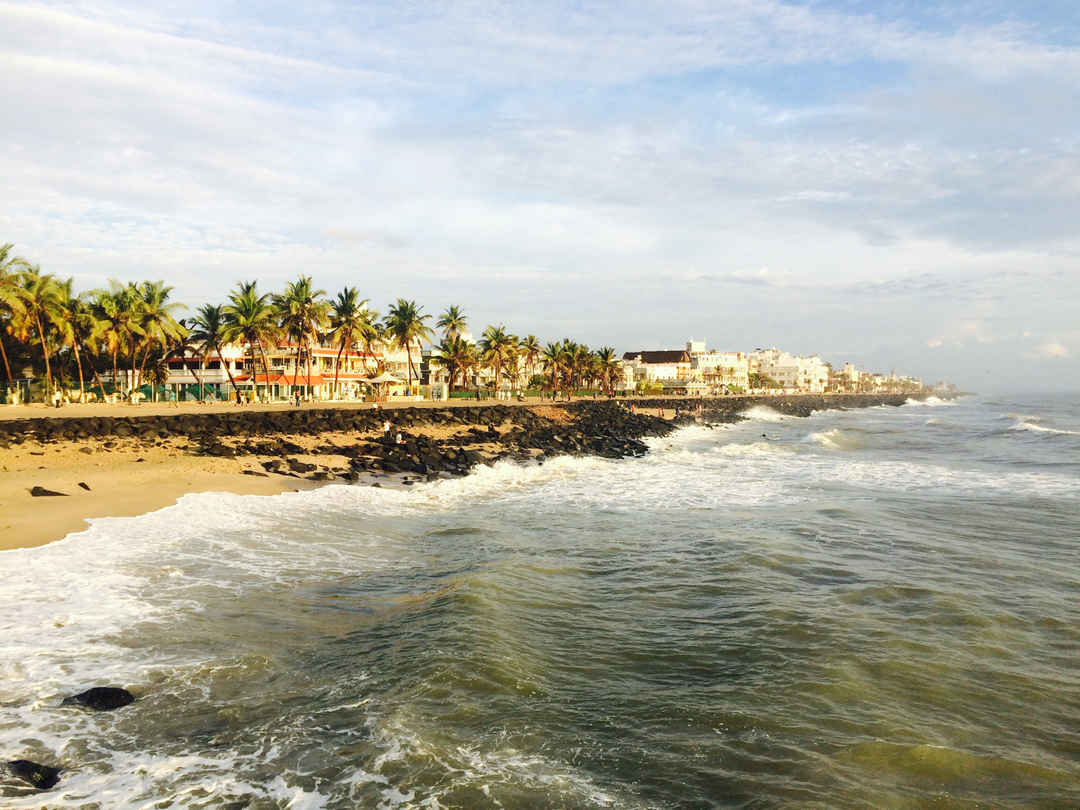 Coorg, Karnataka: Where Coffee and Clouds Embrace
Coorg, Karnataka: Where Coffee and Clouds Embrace
The moment our taxi wound its way up the ghat roads into Coorg, I knew we'd made the right choice. June here isn't about heavy downpours; it's gentle showers that arrive like clockwork in the late afternoon, leaving the air smelling of wet earth and blooming flowers. The coffee plantations stretch endlessly, their deep green leaves glistening with raindrops that catch the afternoon sun like scattered diamonds.
Why Coorg in June?
- Temperatures hover between 19-24°C - cool enough for comfort but not cold
- First monsoon showers transform the landscape into a vibrant green paradise
- Waterfalls like Abbey Falls and Irupu Falls are at their most spectacular
- Fewer crowds than peak tourist season in winter
- Perfect conditions for coffee harvesting season
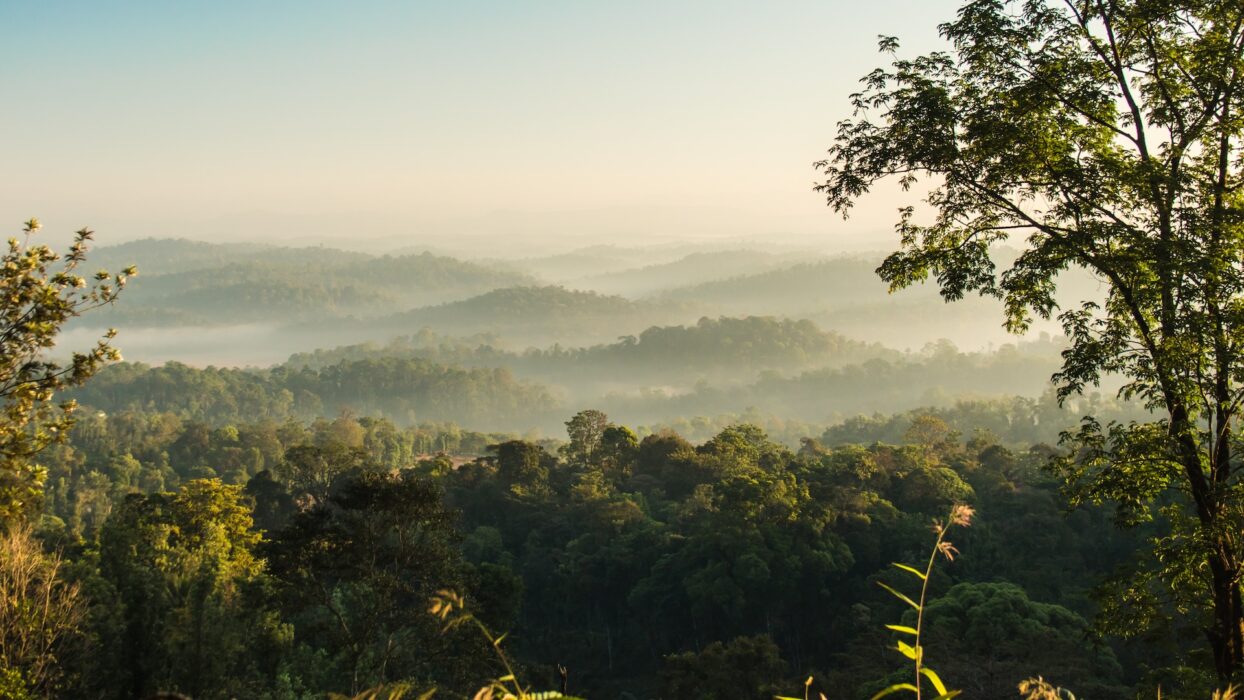
History That Still Lives Here Coorg, or Kodagu as it's officially known, has always been a land apart. The Kodava people, with their unique culture and martial traditions, have called these hills home for centuries. Standing at the Omkareshwara Temple in Madikeri, I traced my fingers over the Indo-Arabic architecture while our guide explained how the Haleri Rajas ruled this region from the 17th century until British rule. What fascinated me most was learning how the British introduced coffee to Coorg in the 1830s after failed attempts with tea. Today, those same coffee estates still operate, many on the same land where British planters first established them.
Cultural Significance Coorg's culture is unlike anywhere else in India. The Kodavas have their own language, customs, and martial traditions. During our stay, we were lucky enough to witness a traditional Kodava wedding. The groom wore the puttu (a distinctive headgear), and the ceremony involved rituals with rice, turmeric, and sacred threads. What struck me was how the community comes together - the entire village participated, sharing food and music late into the night.
Why June is Special for Honeymooners
- The mist that rolls in during evening showers creates an incredibly romantic atmosphere
- Private verandahs of plantation bungalows become the perfect spot for sunset views
- Fewer tourists mean you have entire viewpoints and trails to yourselves
- The sound of rain on tin roofs creates a soothing backdrop for relaxation
- Fresh coffee beans are being harvested, making the air fragrant with earthy notes
How to Reach Coorg
- By Air: Nearest airport is Mangalore (Something 140km), followed by a scenic 4-hour drive through the Western Ghats
- By Train: Mysore is the nearest major railway station (120km), with regular trains from Bangalore
- By Road: The most beautiful option is driving from Bangalore (260km), taking you through winding ghat roads with breathtaking views
- Local Transport: Rent a scooter to explore plantations (roads are dry in June) or hire a taxi for the day
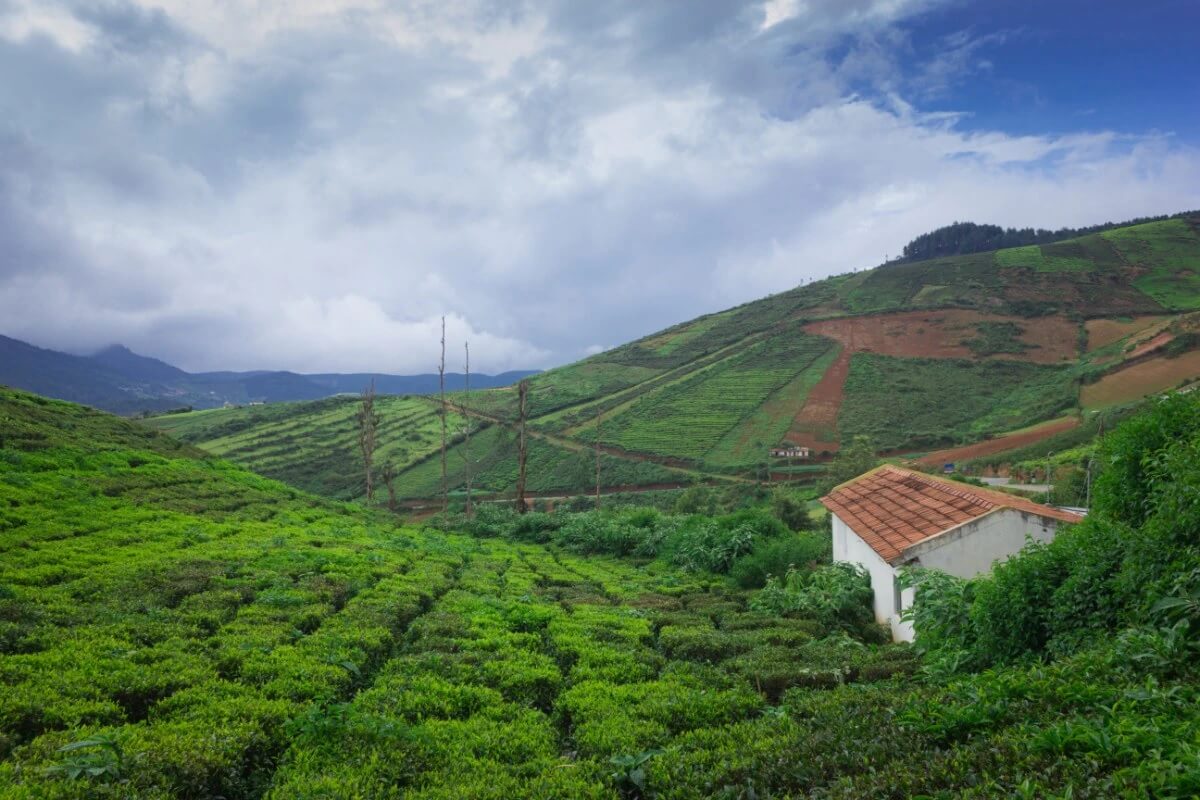
Favorite June Experience in Coorg Sitting on the verandah of our plantation bungalow at sunset, watching the mist roll in while sipping freshly brewed Coorg coffee. The plantation owner, joined us with homemade kadambuttu (steamed rice balls) and told us how his family has been growing coffee here since the British era. As the first evening shower began, the entire valley disappeared into a sea of white mist, leaving only the silhouettes of coffee bushes visible. It was pure magic.
Andaman Islands: Emerald Seas and Secret Beaches
Leaving the misty hills of Coorg for the tropical paradise of the Andamans felt like stepping into another world. As our plane descended toward Port Blair, we could see why this archipelago is called the "Jewel of the Bay of Bengal." The waters weren't just blue; they were a kaleidoscope of turquoise, emerald, and sapphire that seemed to glow from within.
Why Andaman in June?
- Sea temperature around 28°C - perfect for swimming without intense heat
- Brief showers followed by brilliant sunshine create ideal beach conditions
- Water visibility remains excellent for snorkeling (better than July-August)
- Significantly fewer crowds than winter months
- Beaches like Radhanagar and Elephant Beach look particularly pristine
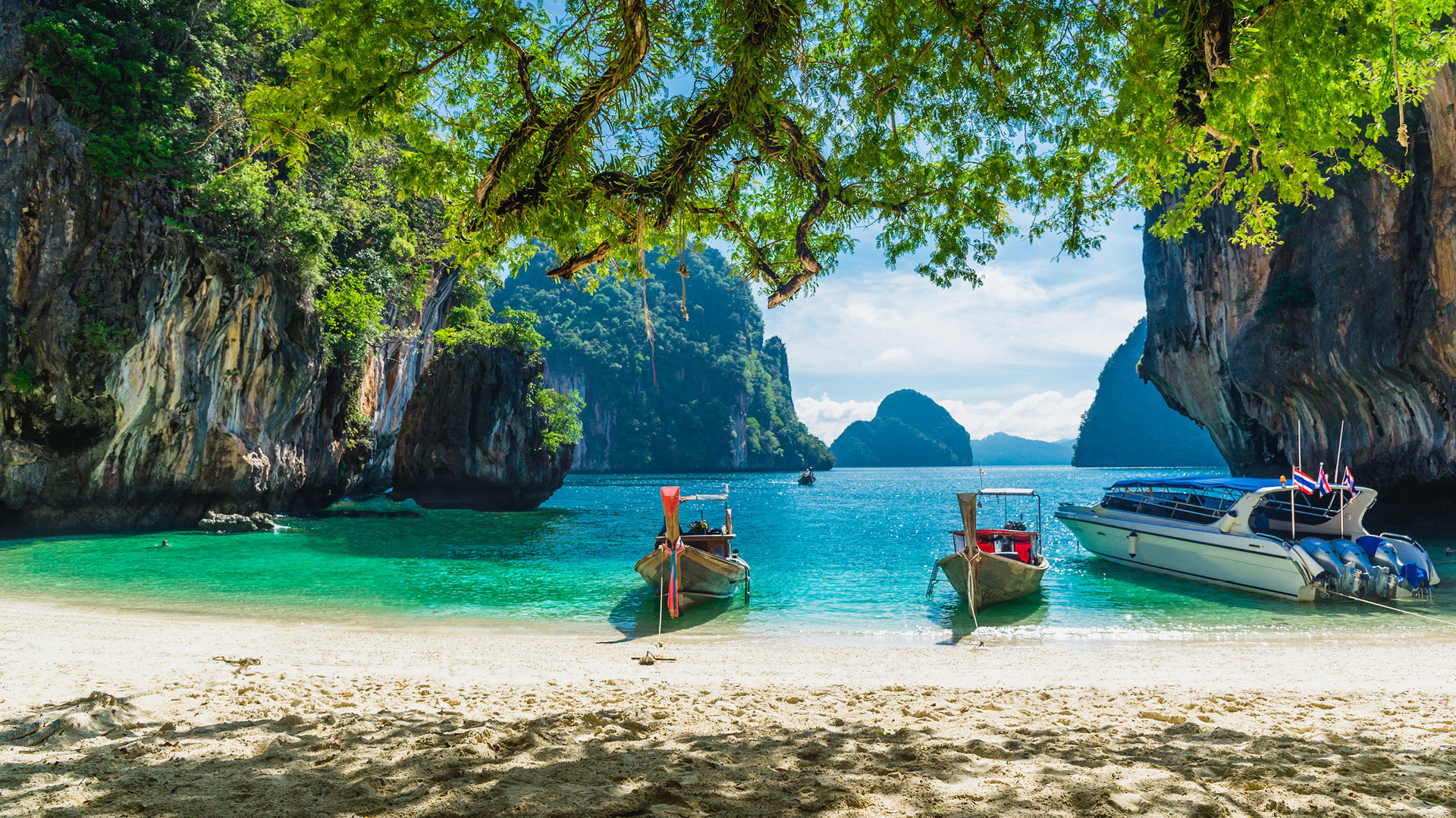
History That Will Break Your Heart At the Cellular Jail in Port Blair, our guide's voice trembled as she explained how this beautiful place was once a prison for freedom fighters during British rule. The "Kala Pani" (black water) was used to isolate political prisoners from mainland India. Standing in those cells, imagining the courage of those who were imprisoned here, gave us a deeper appreciation for the freedom we now enjoy to travel these islands. The daily light and sound show at the jail is a must-see but be prepared for an emotional experience.
Cultural Significance The Andamans are home to several indigenous tribes, including the Jarawa and Onge, who have lived here for thousands of years. While contact with these tribes is restricted to protect their way of life, the local culture is a fascinating blend of Bengali, Tamil, and Malayali influences brought by settlers after independence. During our stay, we attended a local festival where fishermen honored the sea with traditional dances and offerings - a beautiful example of how island life shapes culture.
Why June is Special for Honeymooners
- The sea is calm with gentle waves perfect for swimming
- Water visibility is still excellent for snorkeling despite being monsoon season
- Resorts offer special monsoon packages with discounted rates
- Beaches feel private and exclusive with fewer tourists
- The surrounding greenery is at its lushest, creating stunning contrast with the blue waters
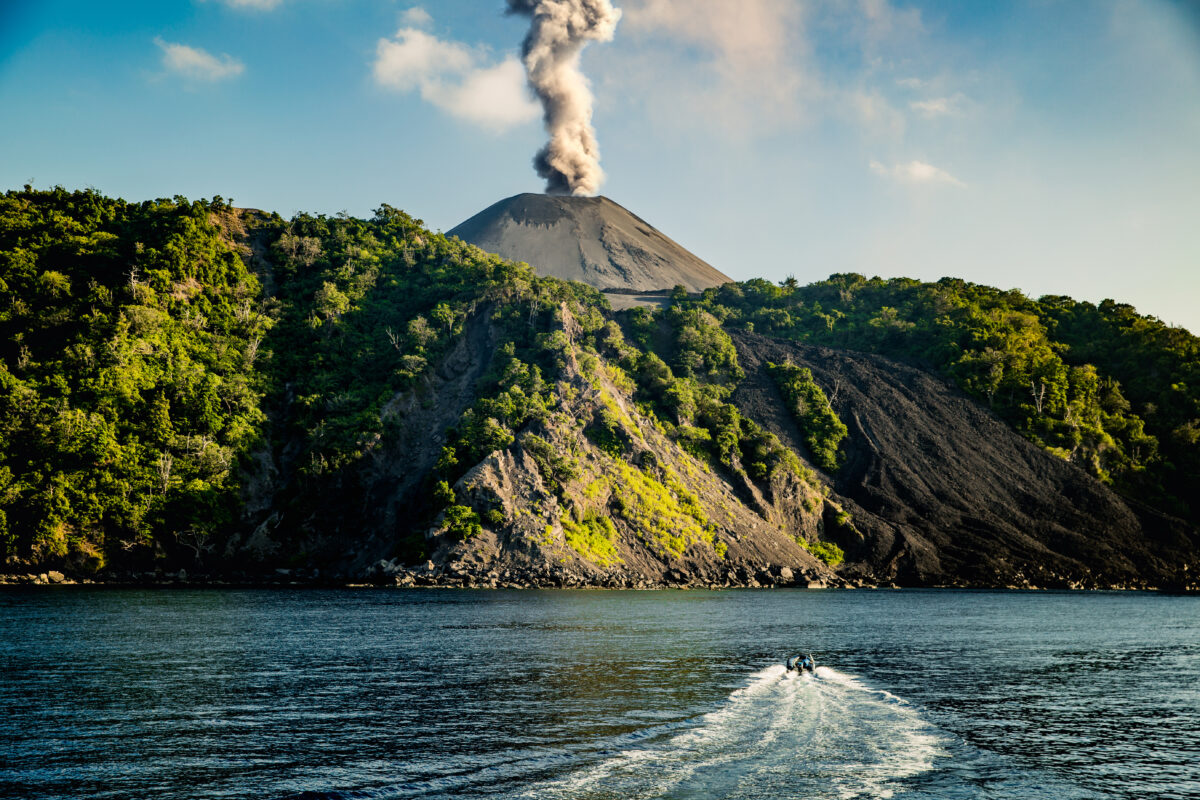
How to Reach Andaman Islands
- By Air: Direct flights from Delhi, Kolkata, Chennai, and Bangalore to Port Blair (VBG)
- By Ship: Overnight ferries from Chennai, Kolkata, or Vishakhapatnam (3-4 days)
- To Islands: From Port Blair, take government ferries or private boats to Havelock (Swaraj Dweep) or Neil Island
- Local Transport: Bicycles or scooters are perfect for exploring Havelock Island; taxis available but limited
My Favorite June Experience in Andamans Snorkeling at Elephant Beach on Havelock Island. After a brief morning shower, the water was crystal clear, and we had the entire beach to ourselves. As we floated in the warm water, we saw vibrant coral formations and schools of colorful fish swimming beneath us. Later, we rented a kayak and paddled through the mangrove channels, watching kingfishers dive for fish. As the sun began to set, we sat on the beach with fresh coconut water, watching the waves gently roll in - pure honeymoon bliss.
Leh-Ladakh: Where the Sky Meets the Earth
If Coorg was gentle and the Andamans were tropical, Ladakh was pure, unadulterated awe. Flying into Leh felt like landing on another planet - stark mountains, barren landscapes, and an intense blue sky that seemed impossibly close. June marked the official opening of the region as snow melted from the high mountain passes, making it accessible after winter's isolation.
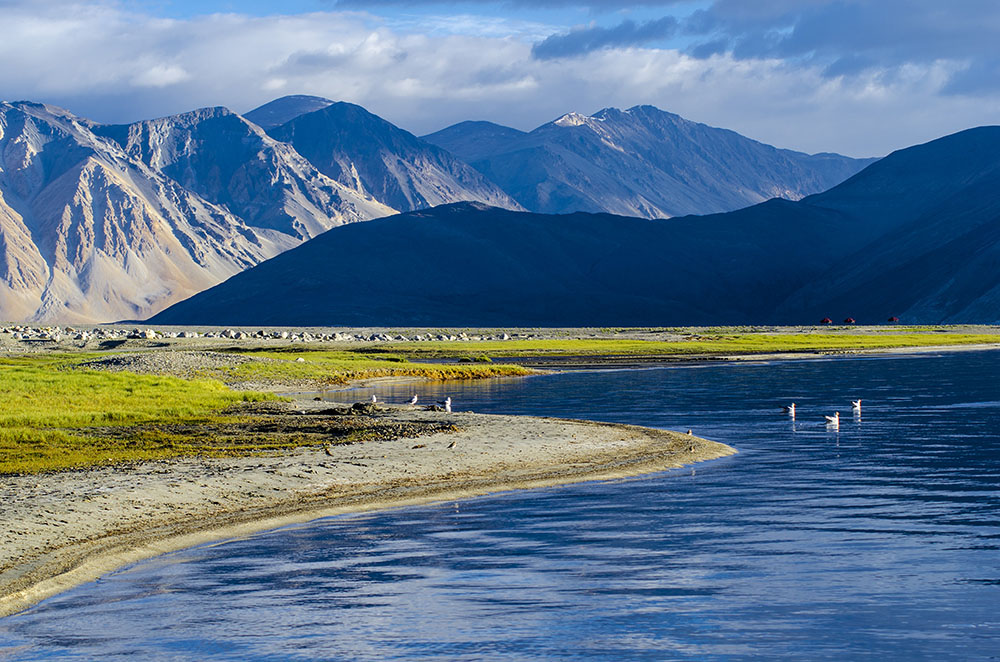
Why Leh-Ladakh in June?
- Temperatures mild (15-30°C during the day) with cool nights
- First snowmelt creates dramatic waterfalls and flowing rivers
- Nubra Valley's apricot blossoms in full bloom
- Fewer tourists than July-August peak season
- Roads to popular destinations like Pangong Lake become accessible
History Written in Monasteries Standing in the ancient Hemis Monastery, I felt the weight of centuries. Founded in the 17th century, this is one of Ladakh's wealthiest and most famous monasteries. Our guide, Tenzin, explained how Ladakh was once a crucial stop on the Silk Route, connecting Tibet, India, and Central Asia. The region's Buddhist culture flourished through these trade routes, with monasteries becoming centers of learning and art. What fascinated me most was learning about the region's royal history - the Leh Palace, built in the 17th century, stands as a testament to Ladakh's former kingdom.
Cultural Significance Ladakhi culture is deeply rooted in Tibetan Buddhism, yet uniquely Ladakhi. During our stay, we were fortunate to witness the Dosmoche festival at Leh Palace, where masked dancers performed ancient rituals to drive away evil spirits. The local Ladakhi people welcomed us with khata (white scarves) and chang (local barley beer), making us feel instantly at home. What struck me was how modern life has blended with ancient traditions - you'll see monks using smartphones while wearing traditional robes.
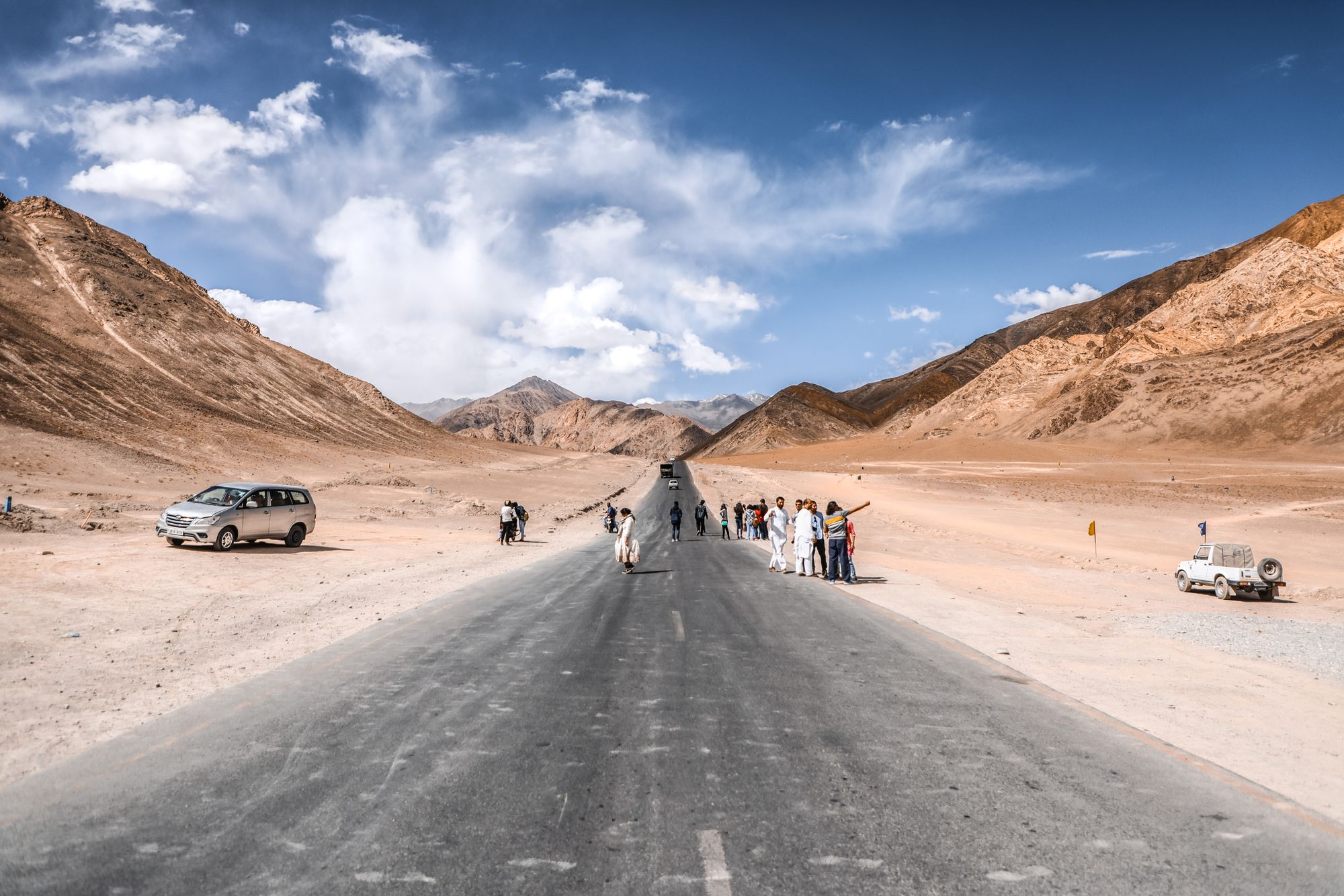
Why June is Special for Honeymooners
- Clear skies provide stunning star-gazing opportunities
- The stark landscape creates dramatic photo backdrops
- Fewer crowds mean more intimate experiences at popular sites
- Ideal conditions for exploring without extreme summer heat
- Unique opportunity to experience the region as it "wakes up" from winter
How to Reach Leh-Ladakh
- By Air: Direct flights from Delhi, Mumbai, and Srinagar to Kushok Bakula Rimpochee Airport
- By Road: Challenging but rewarding options from Manali (490km) or Srinagar (434km)
- Important Note: Spend at least 2 days acclimatizing in Leh before venturing to higher altitudes
- Local Transport: Shared taxis to popular destinations; rent a bike for more flexibility (but be cautious at high altitudes)
My Favorite June Experience in Ladakh Watching the sunrise over Pangong Lake. We left Leh at 4 AM, driving through Chang La pass (17,090 ft) as the first light began to appear. As we reached the lake, the water shifted colors from deep blue to silver as the sun rose, while the surrounding mountains glowed pink against the morning sky. I sat on the shore in complete silence, feeling incredibly small yet deeply connected to something vast. Later, we visited a local nomad family who welcomed us into their tent with butter tea and shared stories of their life in this harsh but beautiful landscape.
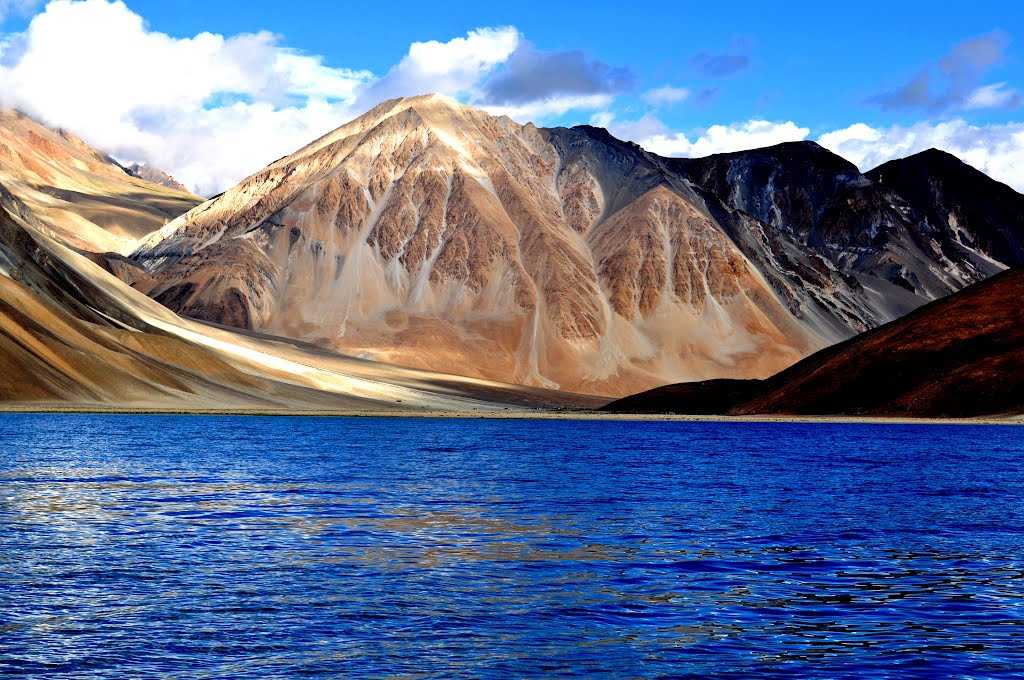
Pondicherry: French Romance Meets Indian Spirit
From the stark beauty of Ladakh, we transitioned to the colonial charm of Pondicherry. Stepping out of the taxi into the old French Quarter felt like entering a different era. The mustard yellow and ochre buildings with their distinctive French architecture stood in stark contrast to the vibrant Indian life unfolding around them.
Why Pondicherry in June?
- Temperatures around 25-32°C with frequent refreshing showers
- First monsoon showers create a romantic, misty atmosphere
- Fewer tourists than winter months
- Streets lined with blooming frangipani trees
- Ocean remains calm with gentle waves perfect for swimming

History That Still Lives in the Streets Pondicherry's history is written in its very streets. The French East India Company established a trading post here in 1674, and the city remained under French control until 1954. Walking through the French Quarter, you can still see the grid pattern of streets, the distinctive architecture, and even French street names. At the Sri Aurobindo Ashram, I learned how this spiritual center was founded by Sri Aurobindo and "The Mother" in 1926, becoming a beacon for spiritual seekers worldwide. The blend of French colonial history and Indian spirituality creates a unique cultural tapestry.
Cultural Significance Pondicherry's culture is a fascinating blend of French and Indian influences. During our stay, we attended a local festival where French and Tamil traditions merged seamlessly. The French influence is evident in the bakeries serving fresh baguettes alongside traditional Indian snacks. What fascinated me was how the city celebrates both Bastille Day and Indian festivals with equal enthusiasm. The Auroville community nearby represents an even more ambitious cultural experiment - an international township dedicated to human unity, founded in 1968.
Why June is Special for Honeymooners
- Monsoon showers create a romantic, intimate atmosphere
- Beaches feel private with fewer tourists
- Perfect weather for exploring colonial architecture without summer heat
- Local markets offer fresh monsoon produce and flowers
- Evening walks along the Promenade become magical as the rain clears

How to Reach Pondicherry
- By Air: Nearest airport is Chennai (140km), followed by a 3-hour drive
- By Train: Regular trains from Chennai (3.5 hours) and Bangalore (7 hours)
- By Road: Well-connected by NH45 from Chennai; taxi or bus readily available
- Local Transport: Cycle rickshaws perfect for exploring the French Quarter; rent bicycles for coastal rides
My Favorite June Experience in Pondicherry Walking along the Promenade after a refreshing afternoon shower. The sea breeze carried the scent of wet earth and frangipani flowers as we strolled hand-in-hand. We stopped at a beachside café for filter coffee and watched the waves gently roll in. Later, we explored the French Quarter, where the rain had washed the streets clean, making the colorful buildings glow in the late afternoon light. At sunset, we joined locals at Paradise Beach for a quiet picnic - the perfect end to a romantic day.
Darjeeling, West Bengal: Where Mountains Meet Mist
Darjeeling hit me with its magic the moment we stepped off the toy train. The air was crisp, carrying the scent of pine and something floral I couldn't identify. June's first monsoon showers had just passed, leaving the air clean and the landscape vibrant green. The famous tea gardens stretched endlessly up the hillsides, their neat rows creating patterns that seemed almost artistic.
Why Darjeeling in June?
- Temperatures range from 18-25°C with cool evenings
- Blooming flowers and lush tea gardens at their greenest
- Occasional mist that creates a magical atmosphere
- Views of Kanchenjunga often crystal clear after rain showers
- Fewer tourists than peak season

History Steeped in Tea At the Happy Valley Tea Estate, our guide explained how Darjeeling tea became world-famous. In 1841, the British established tea plantations here after discovering the region's perfect conditions for growing tea. What fascinated me was learning about the unique "Darjeeling flavor" - a muscatel note that develops due to the region's specific climate and soil. The Darjeeling Himalayan Railway, a UNESCO World Heritage site, was built in 1881 to transport tea to the plains. Riding this toy train through the mountains felt like stepping back in time.
Cultural Significance Darjeeling's culture is a fascinating blend of Nepali, Bengali, and indigenous Lepcha influences. During our stay, we attended the Saga Dawa festival at the Japanese Peace Pagoda, where monks chanted prayers while releasing thousands of colorful prayer flags into the wind. The local Nepali community welcomed us into their home for a traditional meal of dal bhat (lentil soup with rice) and sel roti (sweet rice bread). What struck me was how different communities coexist peacefully here - Buddhist monasteries sit alongside Hindu temples and Christian churches.
Why June is Special for Honeymooners
- Mist that rolls in creates an incredibly romantic atmosphere
- Fewer crowds mean more intimate experiences at popular viewpoints
- Perfect weather for exploring without summer heat or winter chill
- Tea gardens are at their most photogenic with vibrant green leaves
- Evening walks through the town feel magical as the mist settles
How to Reach Darjeeling
- By Air: Nearest airport is Bagdogra (90km), followed by a 3-hour scenic drive
- By Train: Darjeeling Himalayan Railway from Siliguri (2 hours) - a must-experience journey
- By Road: Regular buses and taxis from Siliguri (3 hours)
- Local Transport: Toy train for scenic travel; taxis available but limited; walking is best for exploring town
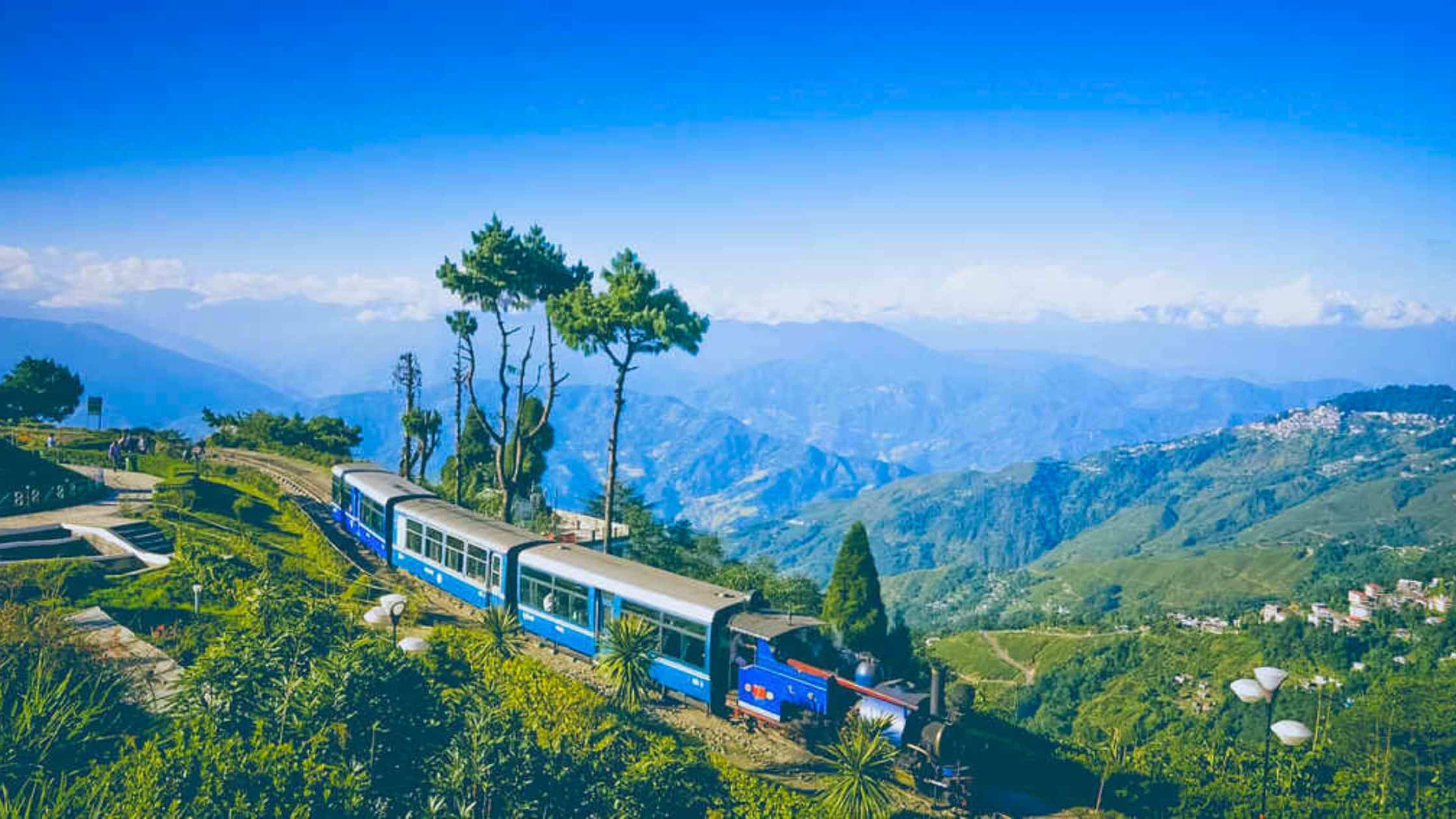
My Favorite June Experience in Darjeeling Watching the sunrise at Tiger Hill. We woke at 4 AM and drove through the misty mountains as the first light began to appear. As we reached the viewpoint, the clouds parted to reveal Kanchenjunga's snow-capped peaks glowing pink in the morning light. PI stood in silence, holding hands as the sun rose higher, illuminating the entire valley below. Later, we visited a local tea planter's home where we learned to identify different tea varieties by taste - a surprisingly romantic experience as we shared a pot of freshly brewed Darjeeling tea while watching the mist roll through the valleys.
Ooty, Tamil Nadu: The Queen of Hill Stations
Ooty greeted us with a cool breeze and the scent of eucalyptus as our taxi wound its way through the Nilgiri Hills. June's first monsoon showers had left the landscape impossibly green, with waterfalls cascading down hillsides we couldn't even see from the road. The colonial architecture stood out against the vibrant green backdrop, creating a scene that felt straight out of a storybook.
Why Ooty in June?
- Temperatures range from 15-22°C - cool and comfortable
- First monsoon showers enhance the natural beauty without heavy rains
- Botanical Gardens in full bloom with seasonal flowers
- Fewer crowds than peak tourist season
- Waterfalls at their most spectacular
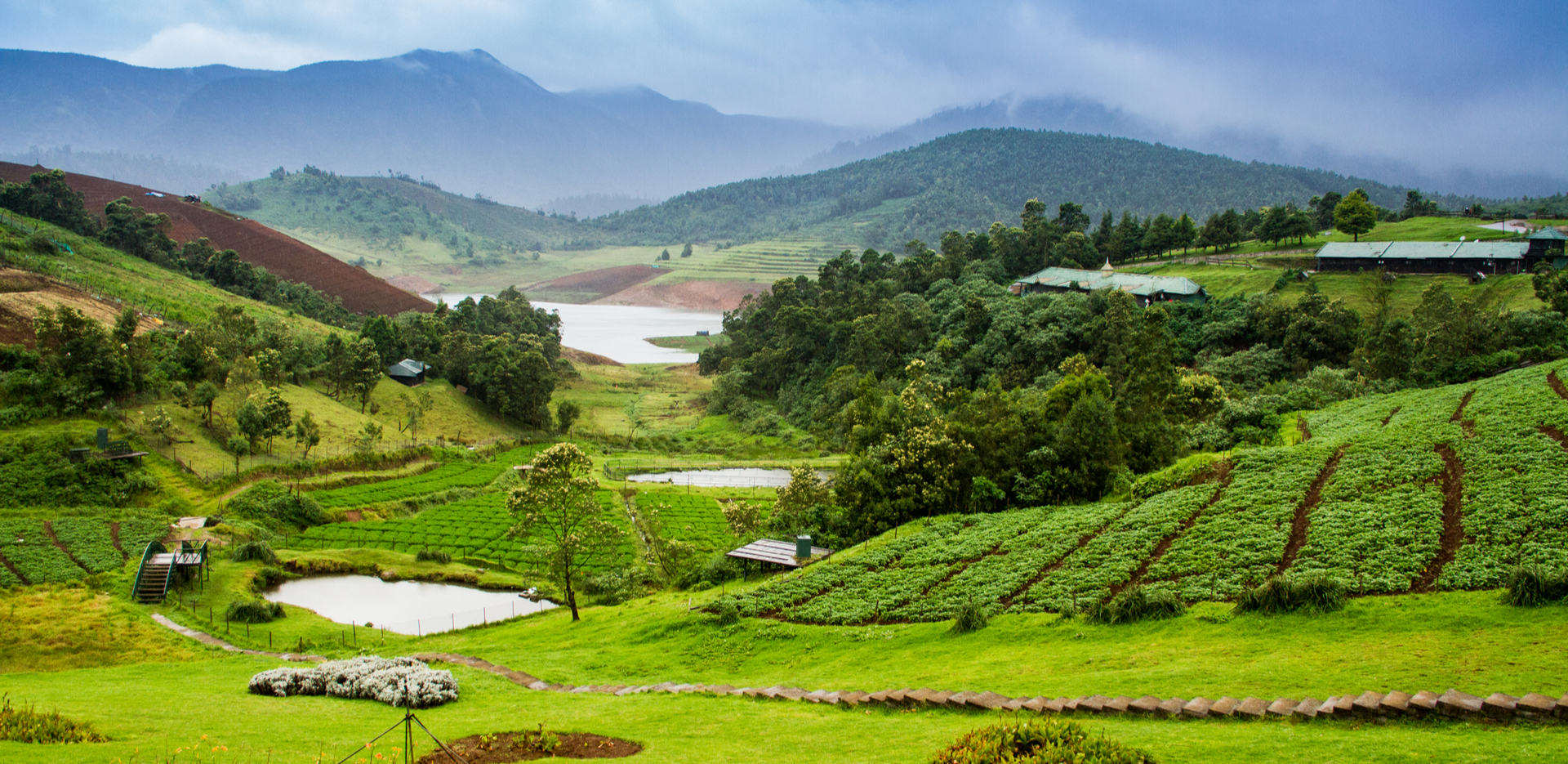
History Written in Gardens and Railways At the Government Botanical Gardens, I learned how Ooty became a popular hill station during British rule. In 1819, John Sullivan, then Collector of Coimbatore, discovered this plateau and established it as a summer retreat for British officials escaping the summer heat. The Nilgiri Mountain Railway, built in 1908, was declared a UNESCO World Heritage site for its engineering marvel. What fascinated me was learning about the Toda people, the indigenous community who have lived in these hills for centuries, known for their distinctive barrel-shaped huts and intricate embroidery.
Cultural Significance Ooty's culture is a blend of Tamil, Badaga, and colonial influences. During our stay, we attended the Summer Festival, a tradition dating back to British times that celebrates the region's flora and fauna. The local Badaga community performed traditional dances while wearing vibrant costumes. What surprised me was how Ooty has become a center for tea and strawberry cultivation - the hillsides are covered with neatly arranged tea bushes and strawberry farms. The weekly farmers' market showcases the region's agricultural bounty, from fresh produce to handmade crafts.
Why June is Special for Honeymooners
- Cool weather perfect for outdoor activities without summer heat
- Waterfalls create romantic backdrops for photos and quiet moments
- Fewer tourists mean more intimate experiences at popular sites
- Strawberry season begins in June, adding to the romantic appeal
- Evening walks through the town feel magical as the mist settles
How to Reach Ooty
- By Air: Nearest airport is Coimbatore (88km), followed by a 4-hour drive
- By Train: Nilgiri Mountain Railway from Mettupalayam (4.5 hours) - a must-experience journey
- By Road: Regular buses and taxis from Coimbatore and Mysore
- Local Transport: Toy train for scenic travel; taxis available; walking is pleasant in June weather
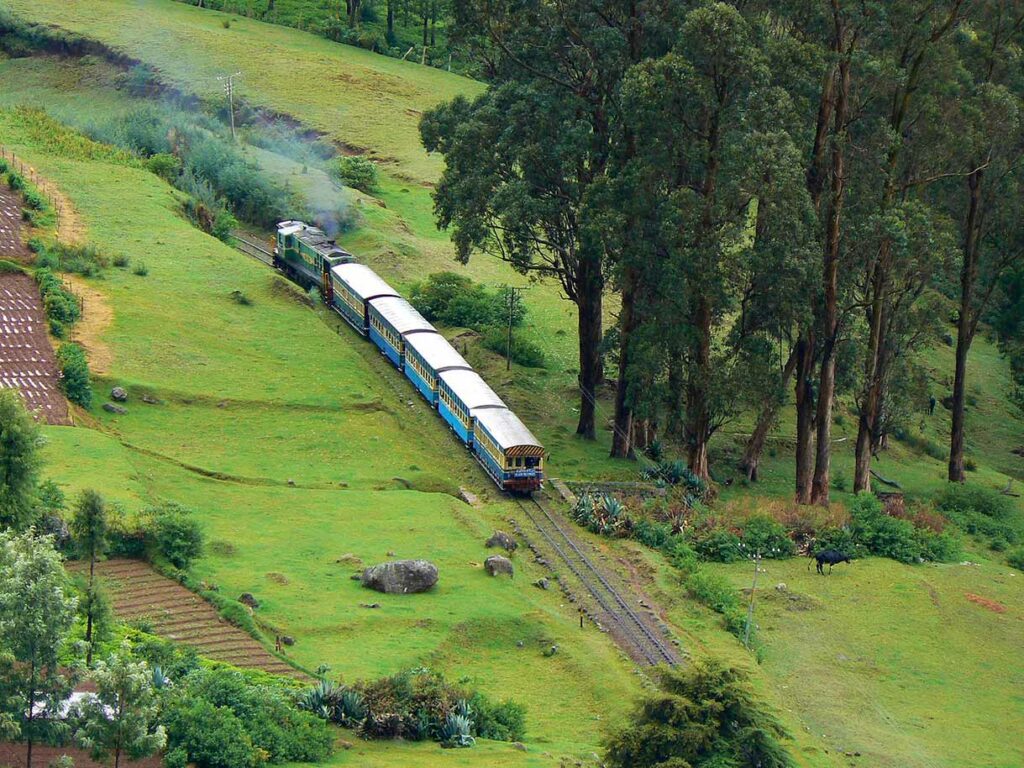
My Favorite June Experience in Ooty Riding the Nilgiri Mountain Railway through the misty hills. We boarded the train at Mettupalayam and watched as the landscape transformed from plains to rolling hills covered in tea plantations. As we climbed higher, the mist rolled in, creating an ethereal atmosphere. At Ketti Valley, the train slowed to cross a breathtaking viaduct with views that seemed to stretch forever. I shared a thermos of hot tea as watched the world pass by - a simple moment that felt incredibly romantic. Later, we visited a local strawberry farm where we picked our own berries and enjoyed fresh strawberry cream - the perfect sweet ending to our day.
Gangtok, Sikkim: Where Mountains Touch the Sky
Gangtok greeted us with a cool breeze and the distant sound of prayer flags fluttering in the wind. Perched on a ridge in the eastern Himalayas, the city unfolded before us in a cascade of colorful buildings against a backdrop of snow-capped peaks. June's first monsoon showers had just passed, leaving the air clean and the landscape vibrant green.
Why Gangtok in June?
- Temperatures range from 18-24°C with cool evenings
- Lush green landscapes with blooming rhododendrons
- Clear views of Kanchenjunga after rain showers
- Fewer tourists than peak season
- Perfect conditions for exploring without summer heat
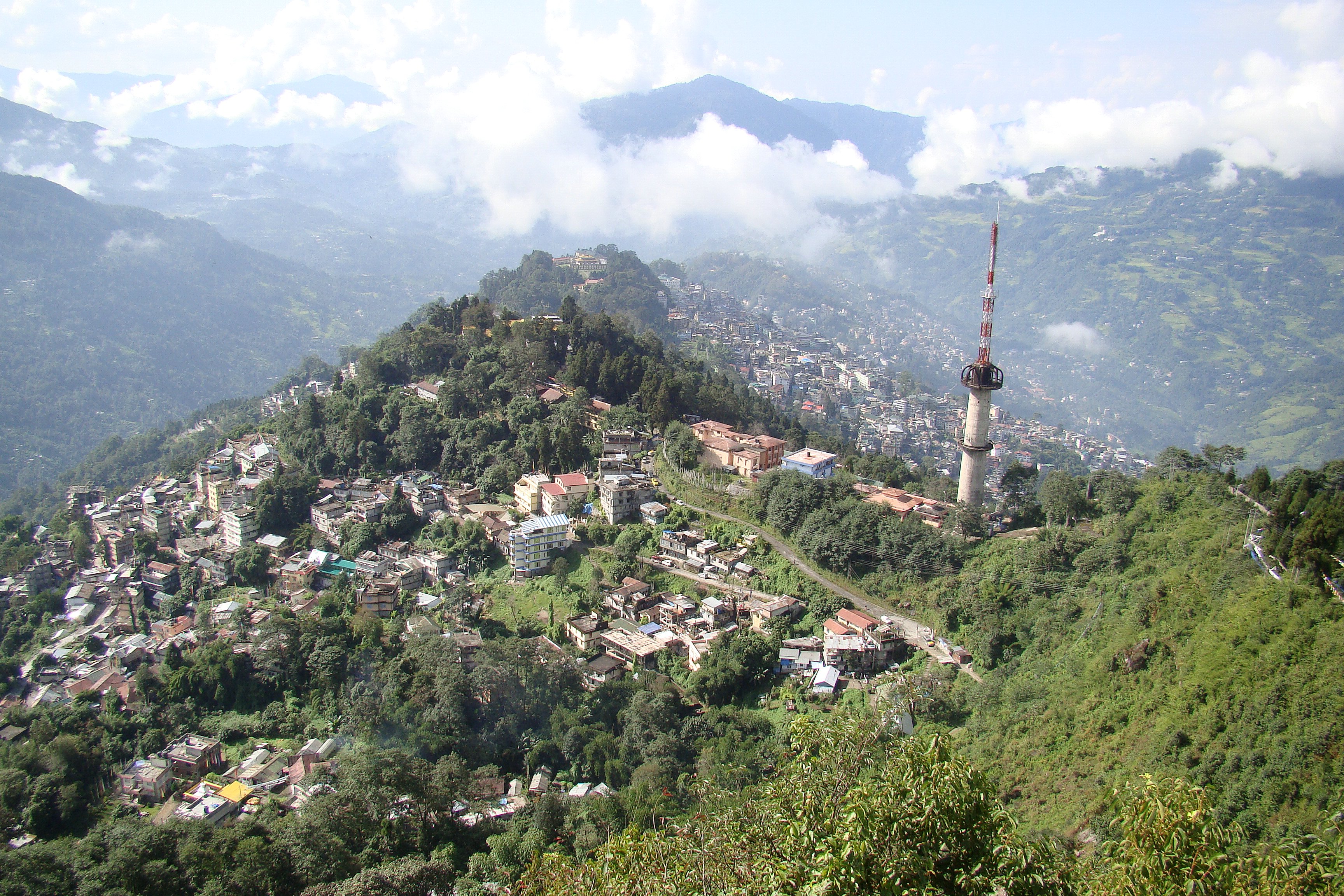
History That Reaches for the Sky At the Enchey Monastery, our guide explained how Gangtok became Sikkim's capital in 1894. Sikkim was once an independent kingdom ruled by the Chogyal (monarch) until it became India's 22nd state in 1975. What fascinated me was learning about the region's importance on the ancient Silk Route between Tibet and India. The Rumtek Monastery, one of Sikkim's most important religious sites, houses priceless Buddhist artifacts and serves as the seat of the Karmapa Lama. Standing at the Ganesh Tok viewpoint, I could see why this strategic location was chosen as the capital - panoramic views in every direction.
Cultural Significance Gangtok's culture is deeply rooted in Tibetan Buddhism, with strong Nepali and Bhutia influences. During our stay, we witnessed the colorful Pang Lhabsol festival, where locals honor Mount Kanchenjunga as a guardian deity. The city's markets buzz with activity as vendors sell everything from traditional thangka paintings to handwoven textiles. What struck me was how modern life has blended with ancient traditions - you'll see monks using smartphones while wearing traditional robes, and young people dancing to electronic music at nightclubs while wearing traditional jewelry.
Why June is Special for Honeymooners
- Cool weather perfect for exploring without summer heat
- Mist that rolls in creates an incredibly romantic atmosphere
- Fewer crowds mean more intimate experiences at popular viewpoints
- Waterfalls at their most spectacular after monsoon showers
- Evening walks through the town feel magical as the mist settles
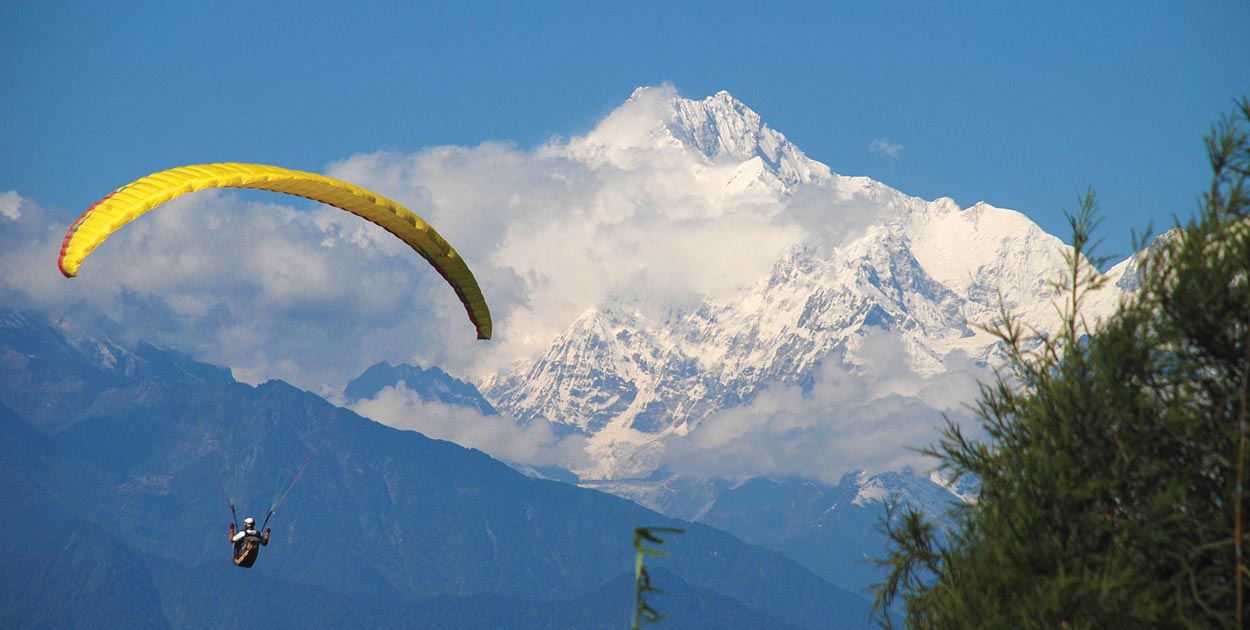
How to Reach Gangtok
- By Air: Nearest airport is Bagdogra (124km), followed by a 4-5 hour scenic drive
- By Train: Nearest railway station is New Jalpaiguri (114km)
- By Road: Regular buses and taxis from Siliguri; the drive offers breathtaking views
- Local Transport: Taxis readily available; walking is pleasant in June weather; shared jeeps for nearby destinations
My Favorite June Experience in Gangtok Watching the sunrise at Tashi Viewpoint. We woke before dawn and drove through the quiet streets as the first light began to appear. As we reached the viewpoint, the clouds parted to reveal Kanchenjunga's snow-capped peaks glowing pink in the morning light. I stood in silence, holding hands as the sun rose higher, illuminating the entire valley below. Later, we visited a local monastery where monks were preparing for morning prayers. The sound of chanting mixed with the distant ringing of temple bells created a moment of profound peace. We ended our day with a traditional Sikkimese meal at a local restaurant, sharing thukpa (noodle soup) and momo (dumplings) while watching the evening mist roll in.
Pelling, Sikkim: The Hidden Gem of the Himalayas
Pelling surprised us with its understated beauty. Unlike the bustling capital Gangtok, Pelling felt like a well-kept secret - a small town perched on a ridge with uninterrupted views of Kanchenjunga. June's first monsoon showers had just passed, leaving the air clean and the landscape vibrant green. The town's colonial-era architecture blended seamlessly with traditional Sikkimese buildings, creating a charming atmosphere.
Why Pelling in June?
- Temperatures range from 17-23°C with cool evenings
- First monsoon showers enhance the natural beauty without heavy rains
- Unobstructed views of Kanchenjunga after rain showers
- Fewer tourists than more famous destinations
- Waterfalls at their most spectacular
_1723563550195.jpg)
History That Whispers from the Hills At the Pemayangtse Monastery, one of Sikkim's oldest and most sacred Buddhist sites, our guide explained how this region has been a spiritual center for centuries. Founded in the early 18th century, the monastery is dedicated to Guru Padmasambhava, who brought Buddhism to Tibet and the Himalayas. What fascinated me was learning about the ancient salt trade route that passed through Pelling, connecting Tibet with India. The Rabdentse Ruins, the former capital of Sikkim until the 17th century, stand as silent witnesses to the region's royal past. Standing among these ruins, I could almost hear the echoes of Sikkim's former kings.
Cultural Significance Pelling's culture is deeply rooted in Tibetan Buddhism, with strong Bhutia and Lepcha influences. During our stay, we attended a local puja ceremony at the Sanga Choeling Monastery, where monks performed ancient rituals with traditional instruments. The town's markets offer a glimpse into daily life, with vendors selling everything from handwoven textiles to medicinal herbs. What struck me was how Pelling has preserved its traditional way of life while slowly embracing tourism - you'll see locals going about their daily routines while welcoming visitors with genuine warmth.
Why June is Special for Honeymooners
- Cool weather perfect for exploring without summer heat
- Mist that rolls in creates an incredibly romantic atmosphere
- Fewer crowds mean more intimate experiences at popular viewpoints
- Waterfalls at their most spectacular after monsoon showers
- Evening walks through the town feel magical as the mist settles
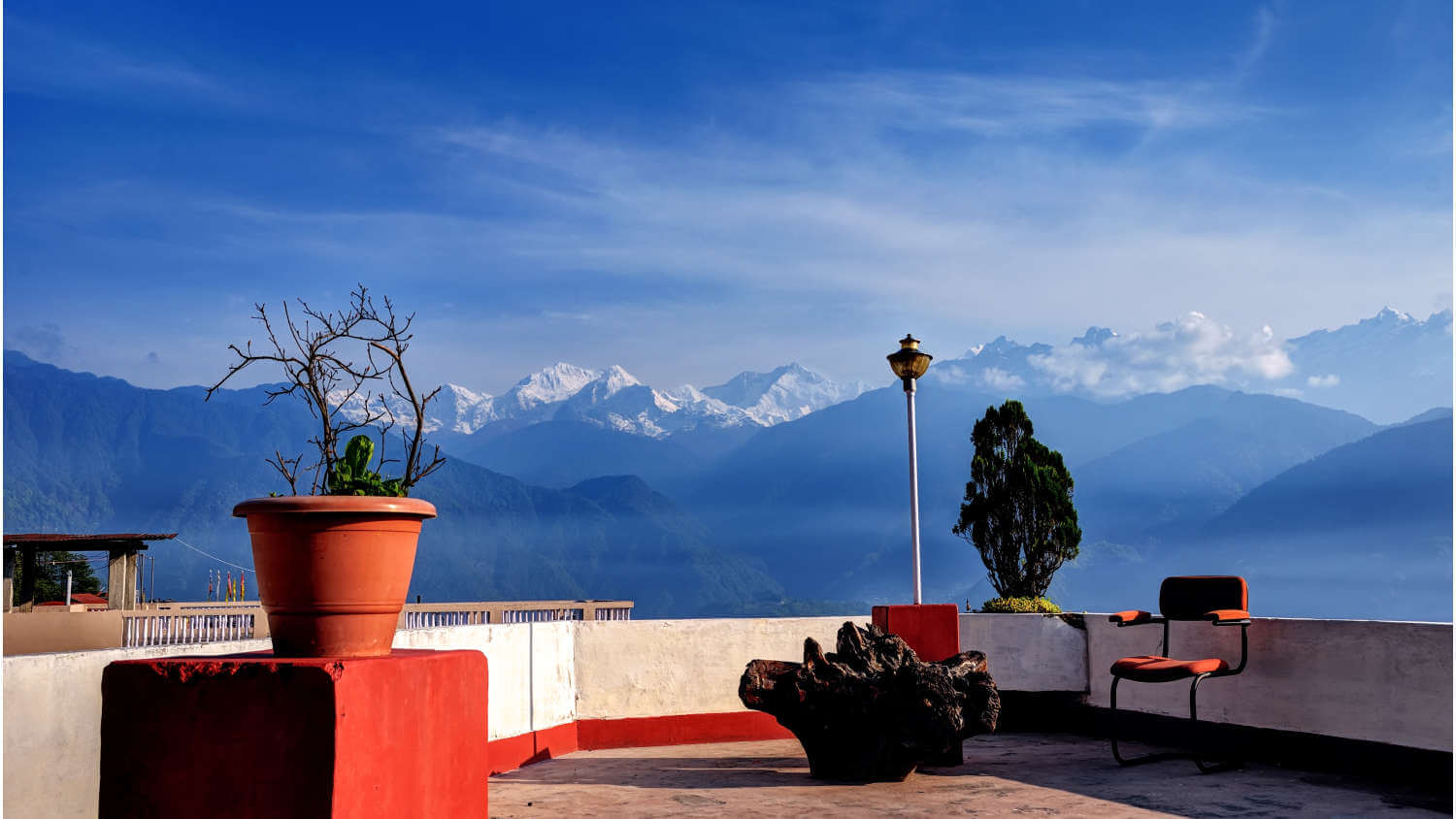
How to Reach Pelling
- By Air: Nearest airport is Bagdogra (135km), followed by a 5-hour scenic drive
- By Train: Nearest railway station is New Jalpaiguri (125km)
- By Road: Regular buses and taxis from Gangtok (110km) or Siliguri
- Local Transport: Taxis available for local sightseeing; walking is pleasant in June weather
My Favorite June Experience in Pelling Watching Kanchenjunga at sunrise from the viewpoint near the Pemayangtse Monastery. We woke before dawn and walked through the quiet streets as the first light began to appear. As we reached the viewpoint, the clouds parted to reveal the majestic peaks glowing pink in the morning light. I stood in silence, holding hands as the sun rose higher, illuminating the entire mountain range. Later, we visited the Rimbi Waterfall, where the monsoon-fed cascade created a rainbow in the morning light. We ended our day with a traditional Sikkimese meal at a local home-stay, sharing stories with our hosts while watching the evening mist roll in - a perfect end to a romantic day.
Kasargod, Kerala: The Forgotten Coastal Paradise
Kasargod surprised us with its untouched beauty. Unlike the more famous beaches of Kerala, Kasargod felt like a well-kept secret - a coastal district where traditional life continues much as it has for centuries. June's first monsoon showers had just passed, leaving the air clean and the landscape vibrant green. The coastline stretched endlessly, with palm-fringed beaches and traditional fishing villages dotting the shore.
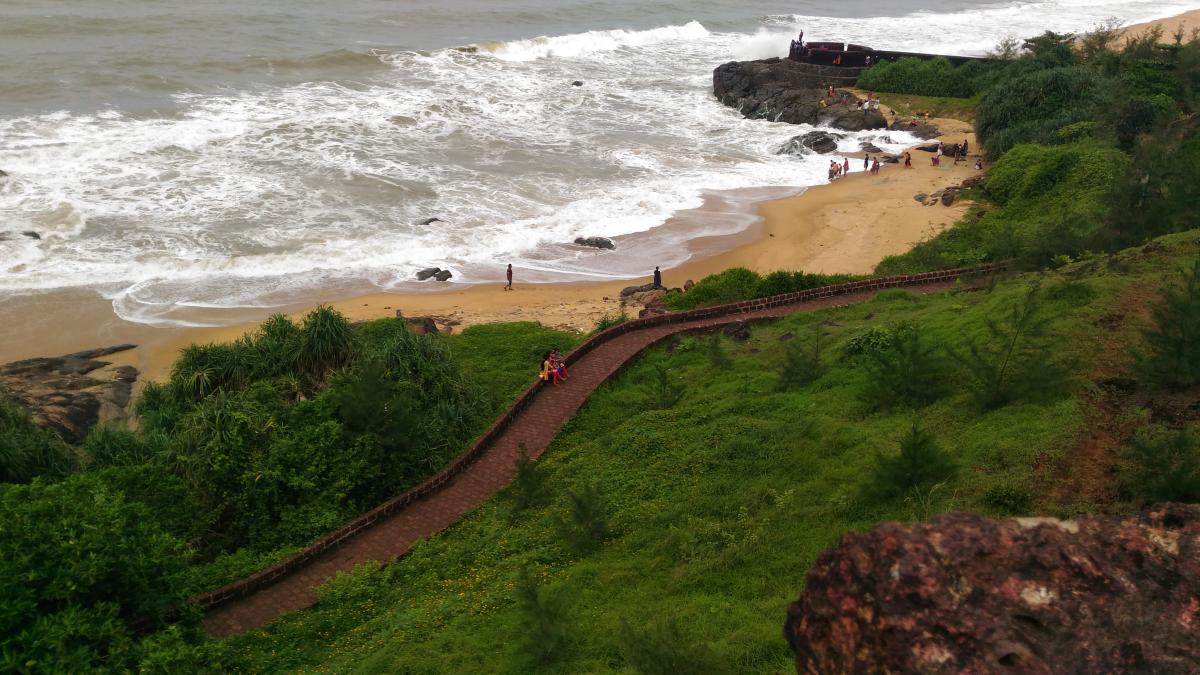
Why Kasargod in June?
- Temperatures range from 26-32°C with frequent refreshing showers
- First monsoon showers enhance the natural beauty without heavy rains
- Fewer tourists than more famous Kerala destinations
- Lush green landscapes with blooming flowers
- Calm seas perfect for swimming and water activities
History That Flows with the Rivers At the Bekal Fort, one of Kerala's largest and best-preserved forts, our guide explained how this region has been a crossroads of cultures for centuries. Built in the 17th century by the Shivappa Nayaka of Ikkeri, the fort offers panoramic views of the Arabian Sea and the surrounding countryside. What fascinated me was learning about the ancient trade routes that passed through Kasargod, connecting Kerala with the Middle East and beyond. The Chandragiri River, which flows through the district, has been a vital transportation route since ancient times. Standing on the fort's ramparts, I could imagine the ships that once sailed these waters carrying spices to distant lands.
Cultural Significance Kasargod's culture is a fascinating blend of Malayali, Tulu, and Kannada influences. During our stay, we witnessed the colorful Theyyam performances, an ancient ritual art form unique to northern Kerala. The local communities welcomed us into their homes, sharing stories of their daily lives and traditional practices. What struck me was how Kasargod has preserved its traditional way of life while slowly embracing modernity - you'll see fishermen using age-old techniques alongside modern boats, and women wearing traditional kasavu sarees while using smartphones.
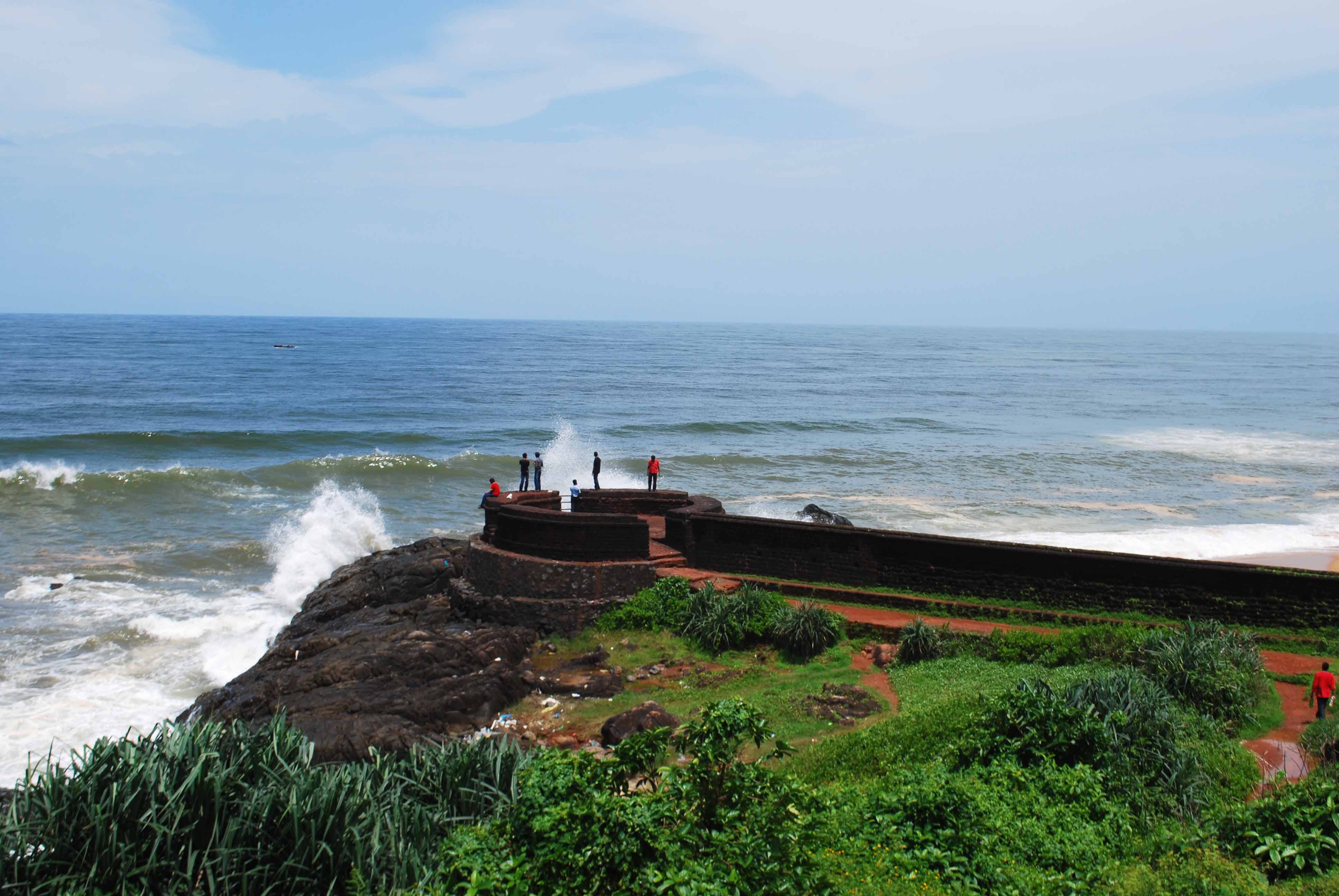
Why June is Special for Honeymooners
- Warm weather perfect for beach activities without extreme heat
- Frequent showers create a romantic, intimate atmosphere
- Fewer crowds mean more private beach experiences
- Lush green landscapes with blooming flowers create stunning backdrops
- Evening walks along the beach feel magical as the rain clears
How to Reach Kasargod
- By Air: Nearest airport is Mangalore (60km), followed by a 1.5-hour drive
- By Train: Kasargod Railway Station is well-connected to major cities
- By Road: Regular buses and taxis from Mangalore and Kannur
- Local Transport: Auto-rickshaws for local travel; walking along the coast is pleasant
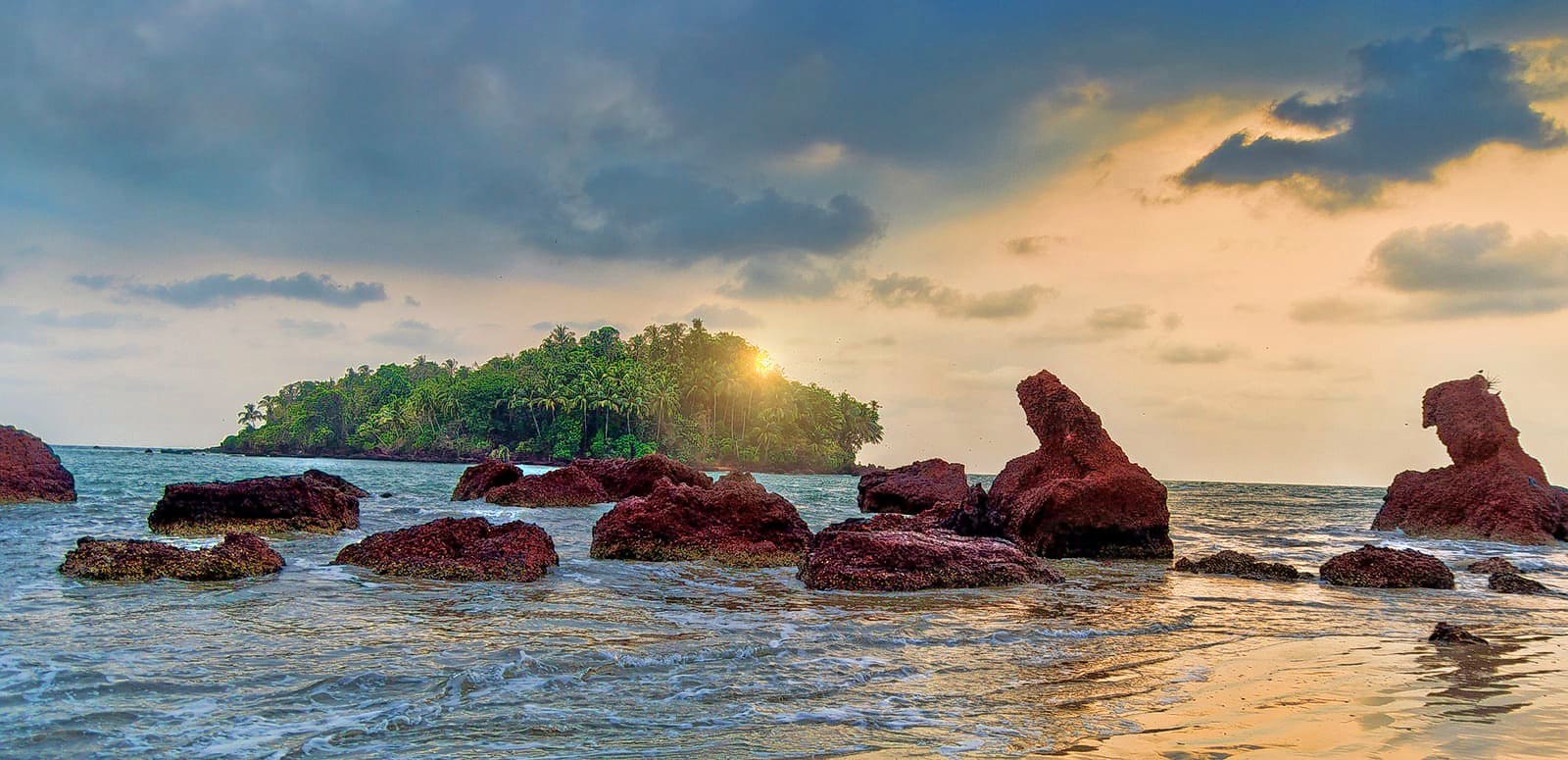
My Favorite June Experience in Kasargod Walking along the unspoiled beaches of Bekal at sunset. We had the entire stretch of sand to ourselves as the first evening shower began to fall. The rain was warm and gentle, creating ripples on the surface of the Arabian Sea. and I ran to a nearby thatched hut where a local fisherman welcomed us with hot tea and stories of his life along the coast. As the rain cleared, the setting sun painted the sky in hues of orange and pink, reflecting off the wet sand. Later, we visited a local home for a traditional Malabar meal, sharing stories with our hosts while watching the evening stars appear - a perfect end to a romantic day.
Alleppey, Kerala: Where Backwaters Meet Romance
Alleppey greeted us with a gentle breeze carrying the scent of coconut and spices. June's first monsoon showers had just passed, leaving the backwaters calm and the landscape impossibly green. The network of canals, lakes, and lagoons stretched endlessly, with traditional houseboats gliding silently through the water. Unlike the crowded tourist season, June offered a more intimate experience of Kerala's famous backwaters.
Why Alleppey in June?
- Temperatures range from 26-32°C with frequent refreshing showers
- First monsoon showers enhance the natural beauty without heavy rains
- Fewer tourists than peak season
- Backwaters at their most serene with calm waters
- Lush green landscapes with blooming flowers
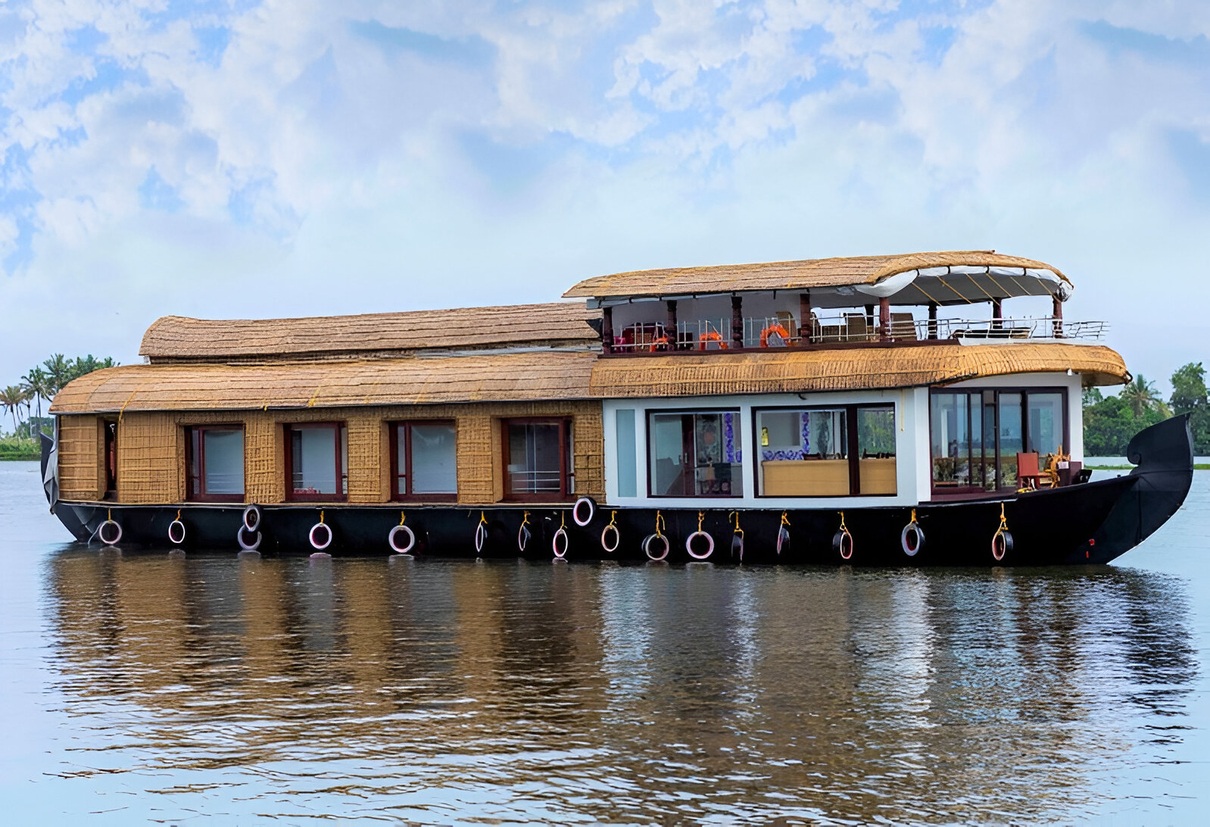
History That Flows with the Backwaters At the Krishnapuram Palace, our guide explained how Alleppey has been a center of trade and culture for centuries. Built in the 18th century by the rulers of Kayamkulam, the palace houses a magnificent mural depicting Gajendra Moksham. What fascinated me was learning about the ancient trade routes that connected Alleppey with the Middle East and Europe, with spices flowing through these very backwaters. The region's coir industry, which uses coconut fiber to make mats and ropes, dates back centuries and remains an important part of the local economy.
Cultural Significance Alleppey's culture is deeply rooted in Kerala's traditions, with strong influences from the region's maritime history. During our stay, we witnessed the colorful Nehru Trophy Boat Race preparations, though the actual race happens in August. The local communities welcomed us into their homes, sharing stories of their daily lives and traditional practices. What struck me was how Alleppey has preserved its traditional way of life while slowly embracing tourism - you'll see fishermen using age-old techniques alongside modern boats, and women making coir products using methods passed down through generations.
Why June is Special for Honeymooners
- Warm weather perfect for houseboat stays without extreme heat
- Frequent showers create a romantic, intimate atmosphere on the backwaters
- Fewer crowds mean more private houseboat experiences
- Lush green landscapes create stunning backdrops for photos
- Evening cruises feel magical as the rain clears and the sky turns golden

How to Reach Alleppey
- By Air: Nearest airport is Cochin (80km), followed by a 2-hour drive
- By Train: Alleppey Railway Station is well-connected to major cities
- By Road: Regular buses and taxis from Cochin and Kollam
- Local Transport: Houseboats for backwater exploration; auto-rickshaws for town travel
My Favorite June Experience in Alleppey Our private houseboat cruise through the backwaters. As the first evening shower began to fall, we sat on the deck under a thatched canopy, watching the rain create ripples on the calm water. The houseboat owner, Mr. Rajan, prepared a traditional Kerala meal using fresh ingredients from local markets. As the rain cleared, the setting sun painted the sky in hues of orange and pink, reflecting off the water. I sat in silence, listening to the sounds of the backwaters - the gentle lapping of water against the boat, the distant calls of birds, and the rustling of palm trees in the breeze. Later, as we drifted to sleep in our comfortable cabin, the gentle rocking of the boat and the sound of rain on the roof created the most peaceful night's sleep imaginable.
Mahabaleshwar: Where Love Meets Nature
Mahabaleshwar surprised us with its cool breeze and the scent of strawberries as our taxi wound its way through the Western Ghats. June's first monsoon showers had just passed, leaving the air clean and the landscape vibrant green. The hill station unfolded before us in a cascade of viewpoints, each offering breathtaking vistas of valleys and distant peaks. Unlike the crowded tourist season, June offered a more intimate experience of this classic hill station.
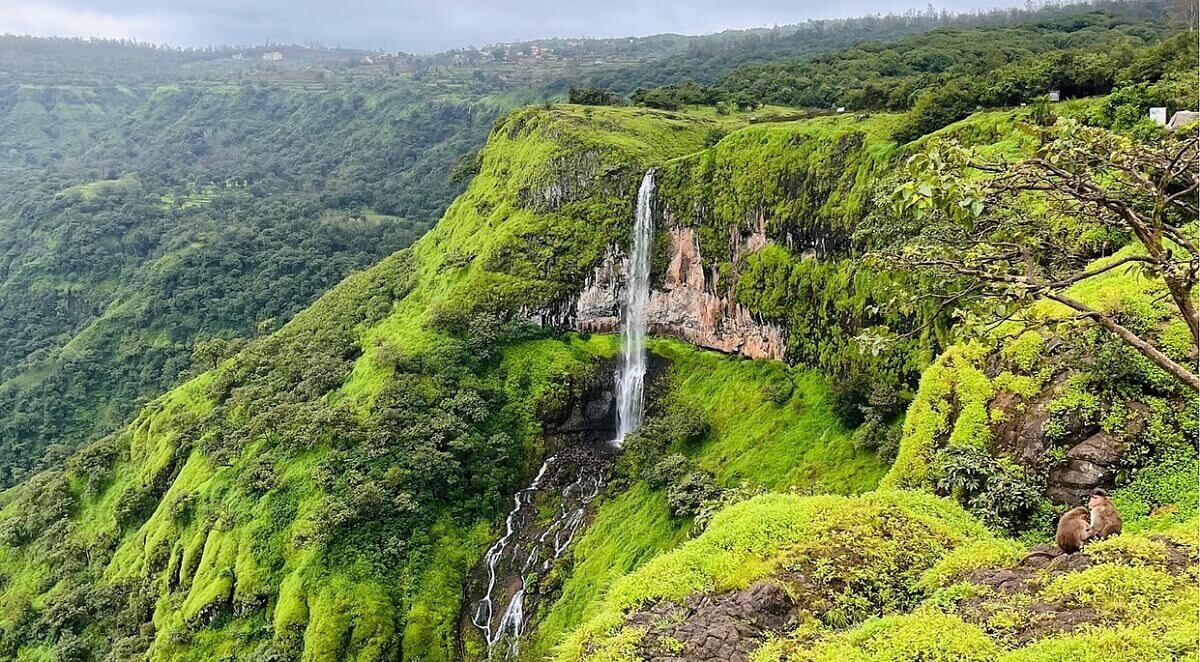
Why Mahabaleshwar in June?
- Temperatures range from 18-25°C with cool evenings
- First monsoon showers enhance the natural beauty without heavy rains
- Strawberry season in full swing
- Fewer tourists than peak season
- Waterfalls at their most spectacular
History That Stretches Back Centuries At the Mahabaleshwar Temple, our guide explained how this region has been a pilgrimage site for centuries. The temple, dedicated to Lord Shiva, is believed to house one of the twelve Jyotirlingas. What fascinated me was learning about the British connection - Lord Elphinstone, Governor of Bombay, established Mahabaleshwar as a hill station in 1827 to escape the summer heat. The region's strategic importance as a military outpost during British rule is evident in the colonial architecture that still stands today. Standing at Arthur's Seat, I could see why the British chose this location - panoramic views in every direction.
Cultural Significance Mahabaleshwar's culture is a blend of Marathi and local Malvi influences. During our stay, we attended the traditional Pola festival preparations, where farmers decorate their bulls in preparation for the harvest festival. The local markets buzz with activity as vendors sell everything from fresh strawberries to handmade chocolates. What struck me was how Mahabaleshwar has preserved its traditional way of life while embracing tourism - you'll see locals going about their daily routines while welcoming visitors with genuine warmth.
Why June is Special for Honeymooners
- Cool weather perfect for exploring without summer heat
- Mist that rolls in creates an incredibly romantic atmosphere
- Fewer crowds mean more intimate experiences at popular viewpoints
- Strawberry season adds to the romantic appeal
- Evening walks through the town feel magical as the mist settles
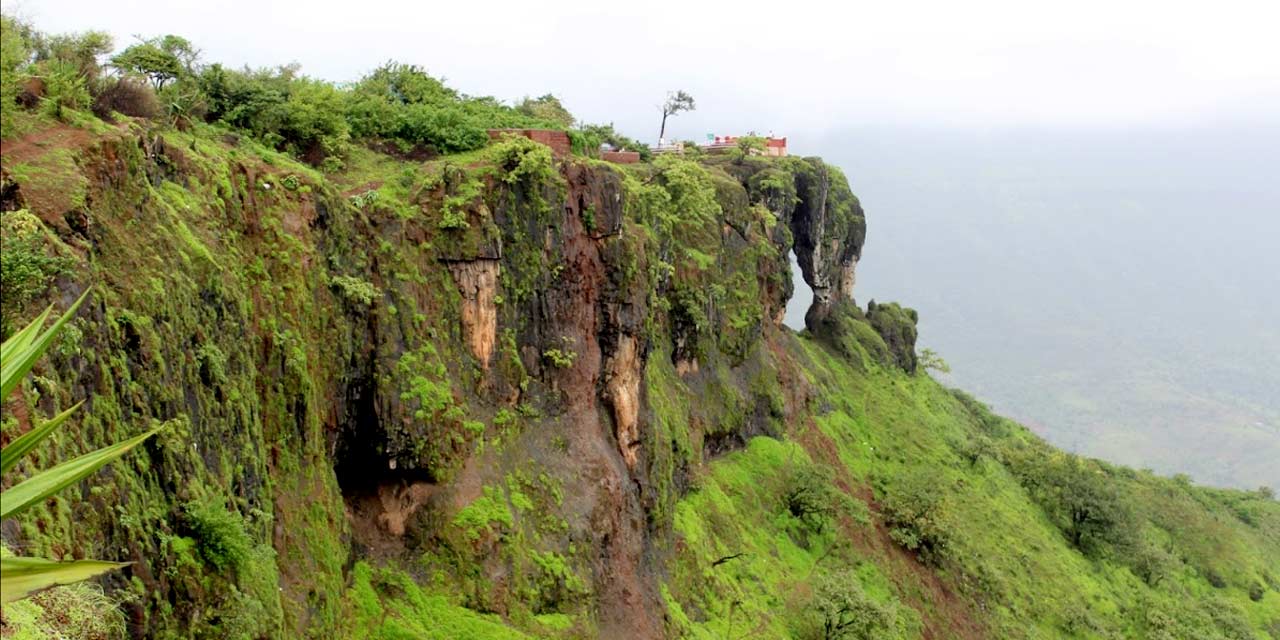
How to Reach Mahabaleshwar
- By Air: Nearest airport is Pune (120km), followed by a 3-hour drive
- By Train: Nearest railway station is Wathar (45km)
- By Road: Regular buses and taxis from Pune and Mumbai
- Local Transport: Taxis readily available; walking is pleasant in June weather
My Favorite June Experience in Mahabaleshwar Watching the sunrise at Elephant's Head Point. We woke before dawn and drove through the quiet streets as the first light began to appear. As we reached the viewpoint, the clouds parted to reveal the valley below shrouded in mist. and I stood in silence, holding hands as the sun rose higher, illuminating the entire landscape. Later, we visited a local strawberry farm where we picked our own berries and enjoyed fresh strawberry cream. We ended our day with a traditional Maharashtrian meal at a local restaurant, sharing pithla bhakri (chickpea curry with millet bread) while watching the evening mist roll in - a perfect end to a romantic day.
Khajuraho: Where Stone Speaks of Love
Khajuraho greeted us with a warm breeze carrying the scent of history. June's first monsoon showers had just passed, leaving the air clean and the landscape vibrant green. The ancient temples stood as silent witnesses to a bygone era, their intricate carvings telling stories of love, devotion, and daily life from centuries past. Unlike the dry summer months, June offered a more pleasant climate for exploring these architectural marvels.
Why Khajuraho in June?
- Temperatures range from 25-35°C with frequent refreshing showers
- First monsoon showers enhance the natural beauty without heavy rains
- Fewer tourists than peak season
- Lush green landscapes create stunning backdrops for the temples
- Pleasant evenings perfect for cultural performances
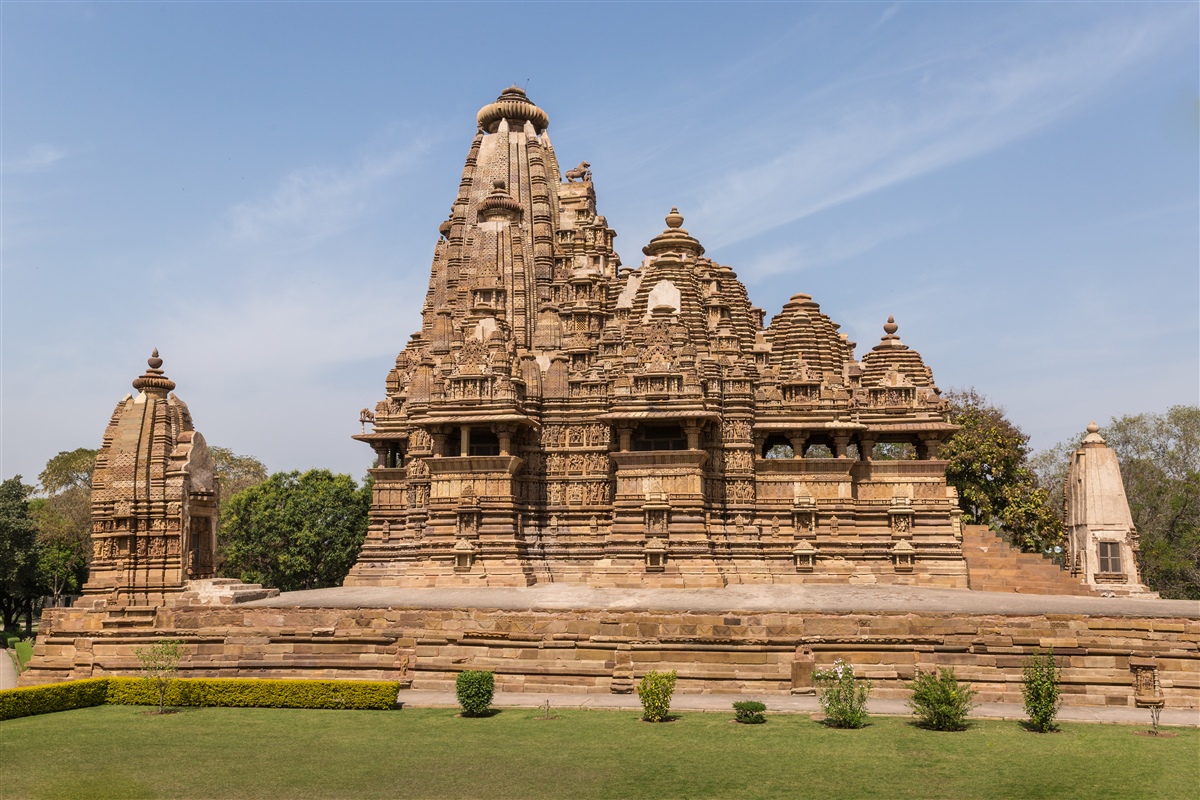
History Carved in Stone At the Western Group of Temples, our guide explained how the Chandela dynasty built these temples between 950 and 1050 CE. What fascinated me was learning that only 25 of the original 85 temples remain, yet they represent some of the finest examples of medieval Indian architecture. The temples are divided into three groups - Western, Eastern, and Southern - each dedicated to different deities. Standing before the Kandariya Mahadeva Temple, the largest and most ornate of them all, I was awestruck by the intricate carvings that cover every inch of its surface.
Cultural Significance Khajuraho's culture is deeply rooted in India's ancient traditions, with strong influences from the region's historical significance. During our stay, we attended the annual Khajuraho Dance Festival (though it's held in February-March, the cultural influence remains strong). The local communities welcomed us with stories of their daily lives and traditional practices. What struck me was how Khajuraho has preserved its historical significance while slowly embracing tourism - you'll see locals going about their daily routines while respecting the sacred nature of these ancient sites.
Why June is Special for Honeymooners
- Warm weather perfect for exploring without extreme heat
- Frequent showers create a romantic, intimate atmosphere
- Fewer crowds mean more private experiences at the temples
- Lush green landscapes create stunning backdrops for photos
- Evening cultural performances feel magical as the rain clears
How to Reach Khajuraho
- By Air: Khajuraho Airport has limited flights from Delhi and other major cities
- By Train: Khajuraho Railway Station is well-connected to major cities
- By Road: Regular buses and taxis from nearby cities like Jhansi and Satna
- Local Transport: Auto-rickshaws for local travel; walking between temple groups is pleasant

My Favorite June Experience in Khajuraho Watching the sunset at the Western Group of Temples. As the first evening shower began to fall, we took shelter under a nearby tree, watching the rain create ripples on the temple ponds. As the rain cleared, the setting sun painted the sky in hues of orange and pink, illuminating the intricate carvings on the temple walls. and I sat in silence, listening to the sounds of the ancient site - the gentle lapping of water in the ponds, the distant calls of birds, and the rustling of leaves in the breeze. Later, we visited a local artisan who demonstrated traditional stone carving techniques, sharing stories of his family's connection to these ancient temples - a perfect end to a romantic day.
Mount Abu: Where Hills Meet Harmony
Mount Abu surprised us with its cool breeze and the scent of pine as our taxi wound its way through the Aravalli Range. June's first monsoon showers had just passed, leaving the air clean and the landscape vibrant green. The only hill station in Rajasthan, Mount Abu felt like an oasis in the desert state, with lakes, forests, and temples creating a serene atmosphere. Unlike the crowded tourist season, June offered a more intimate experience of this peaceful retreat.
Why Mount Abu in June?
- Temperatures range from 20-28°C with cool evenings
- First monsoon showers enhance the natural beauty without heavy rains
- Fewer tourists than peak season
- Nakki Lake at its most serene with calm waters
- Lush green landscapes with blooming flowers
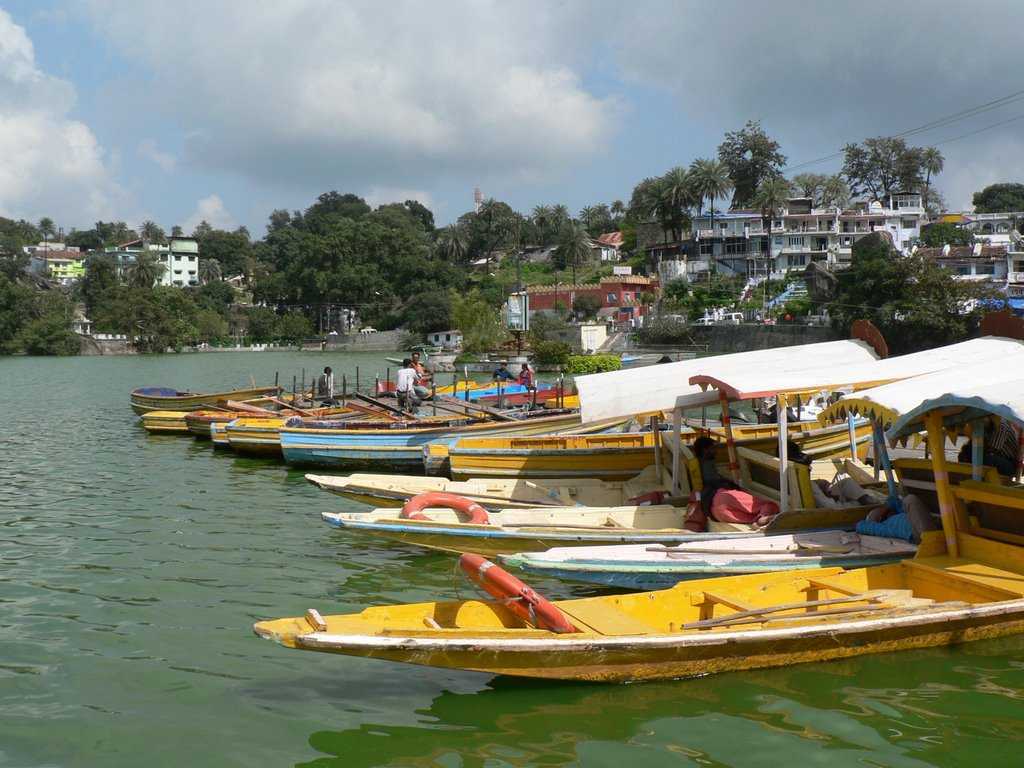
History That Reaches for the Sky At the Dilwara Jain Temples, our guide explained how Mount Abu has been a pilgrimage site for centuries. Built between the 11th and 13th centuries, these temples are considered some of the finest examples of Jain architecture in the world. What fascinated me was learning about the British connection - Mount Abu became a popular hill station during British rule as an escape from the desert heat. The Achalgarh Fort, built in the 11th century, stands as a testament to the region's strategic importance. Standing at Sunset Point, I could see why this location was chosen as Rajasthan's only hill station - panoramic views in every direction.
Cultural Significance Mount Abu's culture is a blend of Jain, Hindu, and tribal influences. During our stay, we witnessed the colorful festivals at the Guru Shikhar temple, dedicated to Dattatreya. The local Bhil community welcomed us with stories of their daily lives and traditional practices. What struck me was how Mount Abu has preserved its spiritual significance while embracing tourism - you'll see pilgrims visiting ancient temples alongside tourists enjoying the natural beauty.
Why June is Special for Honeymooners
- Cool weather perfect for exploring without summer heat
- Mist that rolls in creates an incredibly romantic atmosphere
- Fewer crowds mean more intimate experiences at popular viewpoints
- Lush green landscapes create stunning backdrops for photos
- Evening walks through the town feel magical as the mist settles
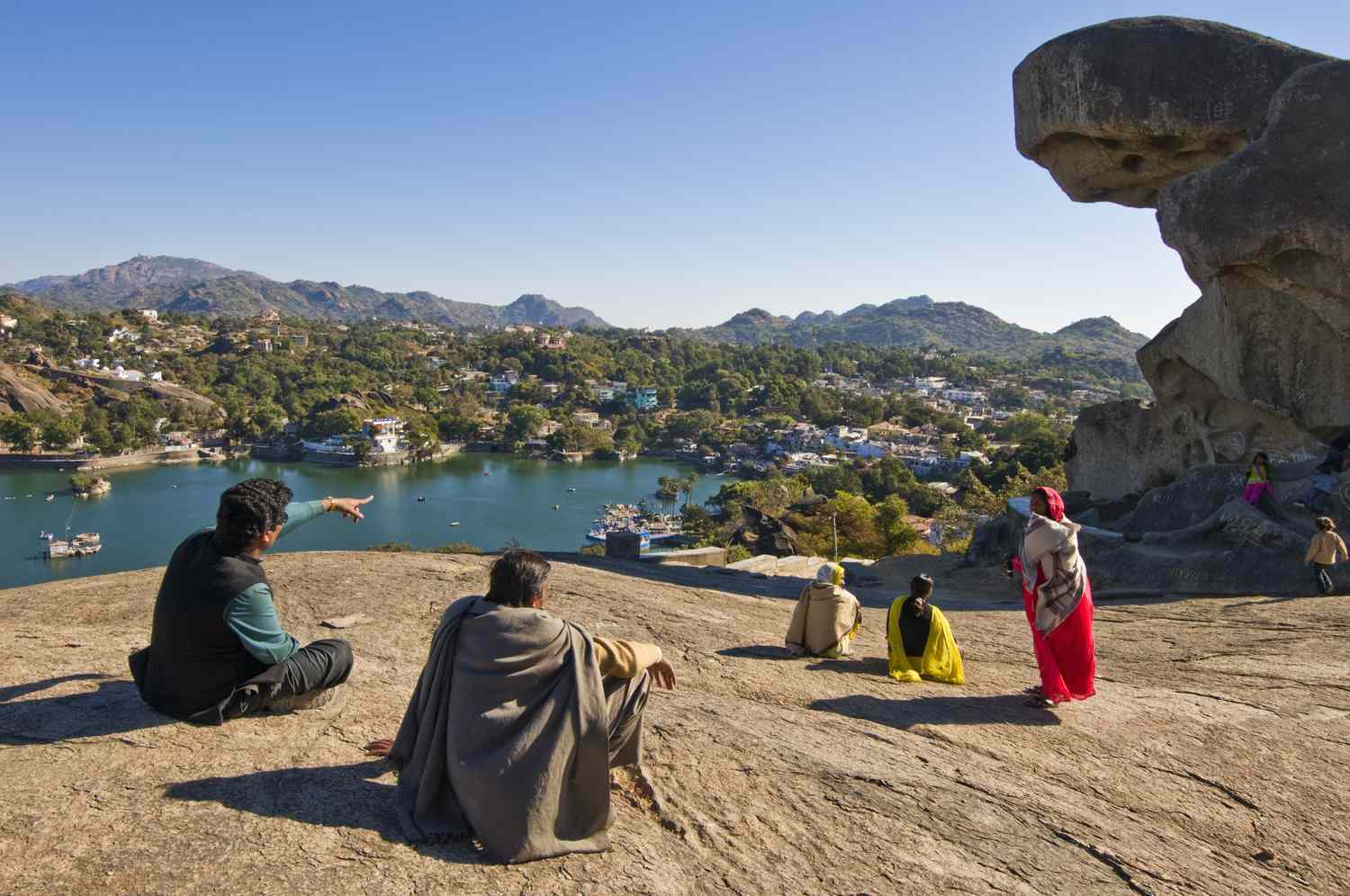
How to Reach Mount Abu
- By Air: Nearest airport is Udaipur (180km), followed by a 4-hour drive
- By Train: Nearest railway station is Abu Road (28km)
- By Road: Regular buses and taxis from Udaipur and Ahmedabad
- Local Transport: Taxis readily available; walking is pleasant in June weather
My Favorite June Experience in Mount Abu Watching the sunrise at Guru Shikhar, Rajasthan's highest point. We woke before dawn and drove through the quiet streets as the first light began to appear. As we reached the summit, the clouds parted to reveal the valley below shrouded in mist. and I stood in silence, holding hands as the sun rose higher, illuminating the entire landscape. Later, we visited the Dilwara Jain Temples, where the morning light highlighted the intricate marble carvings. We ended our day with a traditional Rajasthani meal at a local restaurant, sharing dal baati churma while watching the evening mist roll in - a perfect end to a romantic day.
Coonoor, Tamil Nadu: The Hidden Hill Station
Coonoor surprised us with its understated charm. Unlike the more famous Ooty, Coonoor felt like a well-kept secret - a small town nestled in the Nilgiri Hills with tea plantations stretching endlessly in every direction. June's first monsoon showers had just passed, leaving the air clean and the landscape vibrant green. The colonial architecture blended seamlessly with traditional Tamil buildings, creating a charming atmosphere.
Why Coonoor in June?
- Temperatures range from 16-23°C with cool evenings
- First monsoon showers enhance the natural beauty without heavy rains
- Tea plantations at their most vibrant green
- Fewer tourists than more famous destinations
- Waterfalls at their most spectacular
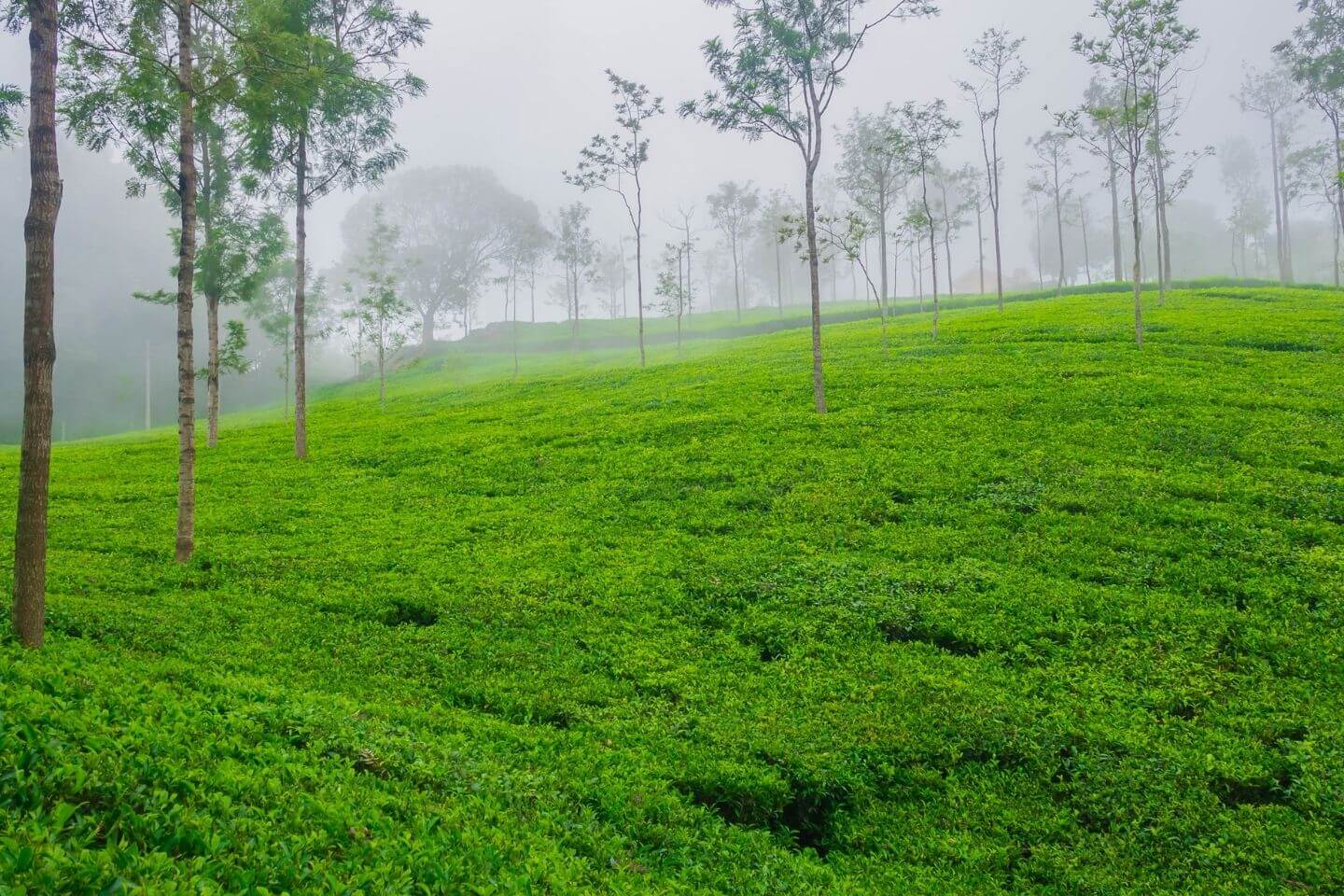
History Steeped in Tea At the Sim's Park, our guide explained how Coonour became a popular hill station during British rule. In 1821, John Sullivan, then Collector of Coimbatore, discovered this plateau and established it as a summer retreat for British officials escaping the summer heat. What fascinated me was learning about the region's indigenous Toda people, known for their distinctive barrel-shaped huts and intricate embroidery. The Catherine Falls, named after the wife of a British official, stands as a testament to the region's colonial past. Standing at Lamb's Rock, I could see why this location was chosen as a retreat - panoramic views of tea plantations and distant peaks.
Cultural Significance Coonoor's culture is a blend of Tamil, Badaga, and colonial influences. During our stay, we attended the local flower show, a tradition dating back to British times that celebrates the region's flora. The local Badaga community performed traditional dances while wearing vibrant costumes. What surprised me was how Coonoor has become a center for tea cultivation - the hillsides are covered with neatly arranged tea bushes. The weekly farmers' market showcases the region's agricultural bounty, from fresh produce to handmade crafts.
Why June is Special for Honeymooners
- Cool weather perfect for outdoor activities without summer heat
- Waterfalls create romantic backdrops for photos and quiet moments
- Fewer tourists mean more intimate experiences at popular sites
- Tea plantations at their most photogenic with vibrant green leaves
- Evening walks through the town feel magical as the mist settles

How to Reach Coonoor
- By Air: Nearest airport is Coimbatore (89km), followed by a 3.5-hour drive
- By Train: Coonoor Railway Station is on the Nilgiri Mountain Railway route
- By Road: Regular buses and taxis from Coimbatore and Mettupalayam
- Local Transport: Toy train for scenic travel; taxis available; walking is pleasant in June weather
My Favorite June Experience in Coonoor Riding the Nilgiri Mountain Railway through the misty hills. We boarded the train at Mettupalayam and watched as the landscape transformed from plains to rolling hills covered in tea plantations. As we climbed higher, the mist rolled in, creating an ethereal atmosphere. At Ketti Valley, the train slowed to cross a breathtaking viaduct with views that seemed to stretch forever. and I shared a thermos of hot tea as we watched the world pass by - a simple moment that felt incredibly romantic. Later, we visited a local tea estate where we learned about the tea-making process and enjoyed a tasting session - the perfect sweet ending to our day.
Valparai, Tamil Nadu: The Hidden Tea Country
Valparai surprised us with its untouched beauty. Unlike the more famous hill stations, Valparai felt like a well-kept secret - a town surrounded by tea and coffee plantations with the Anamalai Tiger Reserve nearby. June's first monsoon showers had just passed, leaving the air clean and the landscape vibrant green. The colonial-era bungalows stood as silent witnesses to the region's plantation history, creating a charming atmosphere.
Why Valparai in June?
- Temperatures range from 18-25°C with cool evenings
- First monsoon showers enhance the natural beauty without heavy rains
- Tea and coffee plantations at their most vibrant green
- Fewer tourists than more famous destinations
- Waterfalls at their most spectacular
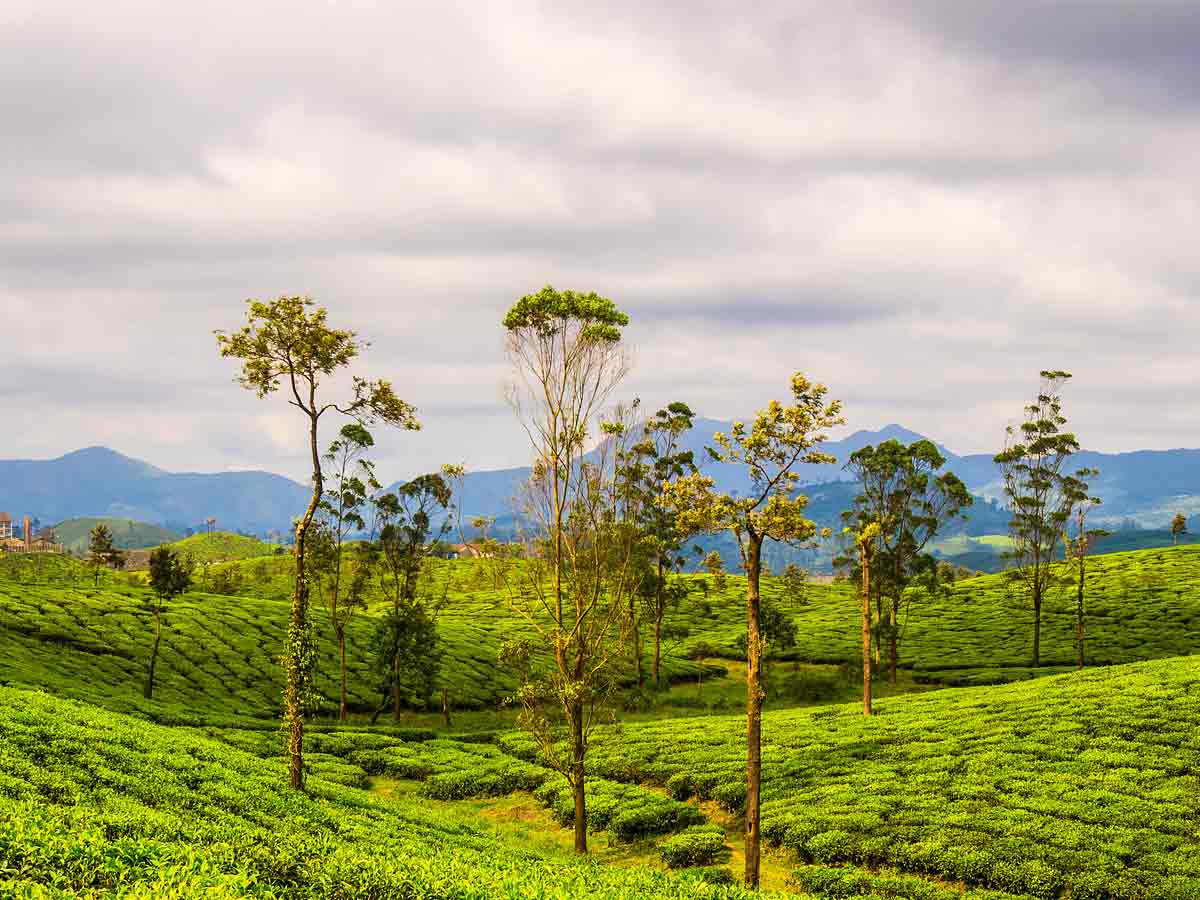
History Written in Plantations At the tea museum, our guide explained how Valparai became a center for tea and coffee cultivation in the 19th century. What fascinated me was learning about the indigenous Adivasi communities who were brought to work on the plantations, creating a unique cultural blend. The region's strategic importance during British rule is evident in the colonial architecture that still stands today. Standing at the top of the Valparai viewpoint, I could see endless rows of tea bushes stretching to the horizon, with mist rolling through the valleys.
Cultural Significance Valparai's culture is a blend of Tamil, Adivasi, and colonial influences. During our stay, we witnessed traditional Adivasi dances performed by the local community. The plantation workers welcomed us with stories of their daily lives and traditional practices. What struck me was how Valparai has preserved its plantation heritage while slowly embracing eco-tourism - you'll see workers going about their daily routines while respecting the natural environment.
Why June is Special for Honeymooners
- Cool weather perfect for exploring without summer heat
- Mist that rolls in creates an incredibly romantic atmosphere
- Fewer crowds mean more intimate experiences at popular viewpoints
- Waterfalls at their most spectacular after monsoon showers
- Evening walks through the town feel magical as the mist settles
How to Reach Valparai
- By Air: Nearest airport is Coimbatore (110km), followed by a 4-hour drive
- By Train: Nearest railway station is Pollachi (60km)
- By Road: Regular buses and taxis from Pollachi
- Local Transport: Taxis available for local sightseeing; walking is pleasant in June weather
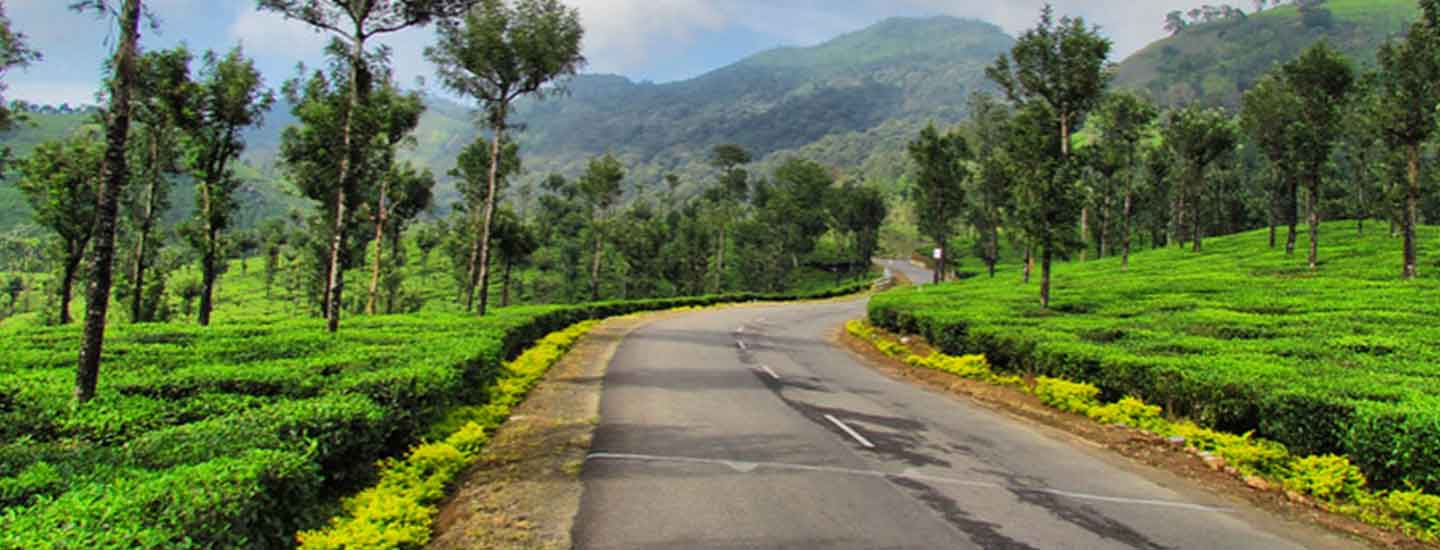
My Favorite June Experience in Valparai Watching the sunrise at the top of the tea plantation. We woke before dawn and walked through the quiet plantation roads as the first light began to appear. As we reached the highest point, the clouds parted to reveal the valley below shrouded in mist. and I stood in silence, holding hands as the sun rose higher, illuminating the entire landscape. Later, we visited a local plantation worker's home where we shared a traditional breakfast of puttu (steamed rice cakes) and kadala curry (chickpea curry). We ended our day with a visit to the Anamalai Tiger Reserve, where we spotted several species of birds and animals - a perfect end to a romantic day.
Kabini, Karnataka: Where Wilderness Meets Romance
Kabini surprised us with its wild beauty. Unlike the more developed resorts, Kabini felt like a return to nature - a river flowing through the edge of Nagarhole National Park, with resorts nestled among trees and wildlife roaming freely. June's first monsoon showers had just passed, leaving the air clean and the landscape vibrant green. The river flowed gently, reflecting the surrounding forest, while birds called from the trees overhead.
Why Kabini in June?
- Temperatures range from 24-32°C with frequent refreshing showers
- First monsoon showers enhance the natural beauty without heavy rains
- Fewer tourists than peak season
- Lush green landscapes with blooming flowers
- Calm river perfect for boat safaris
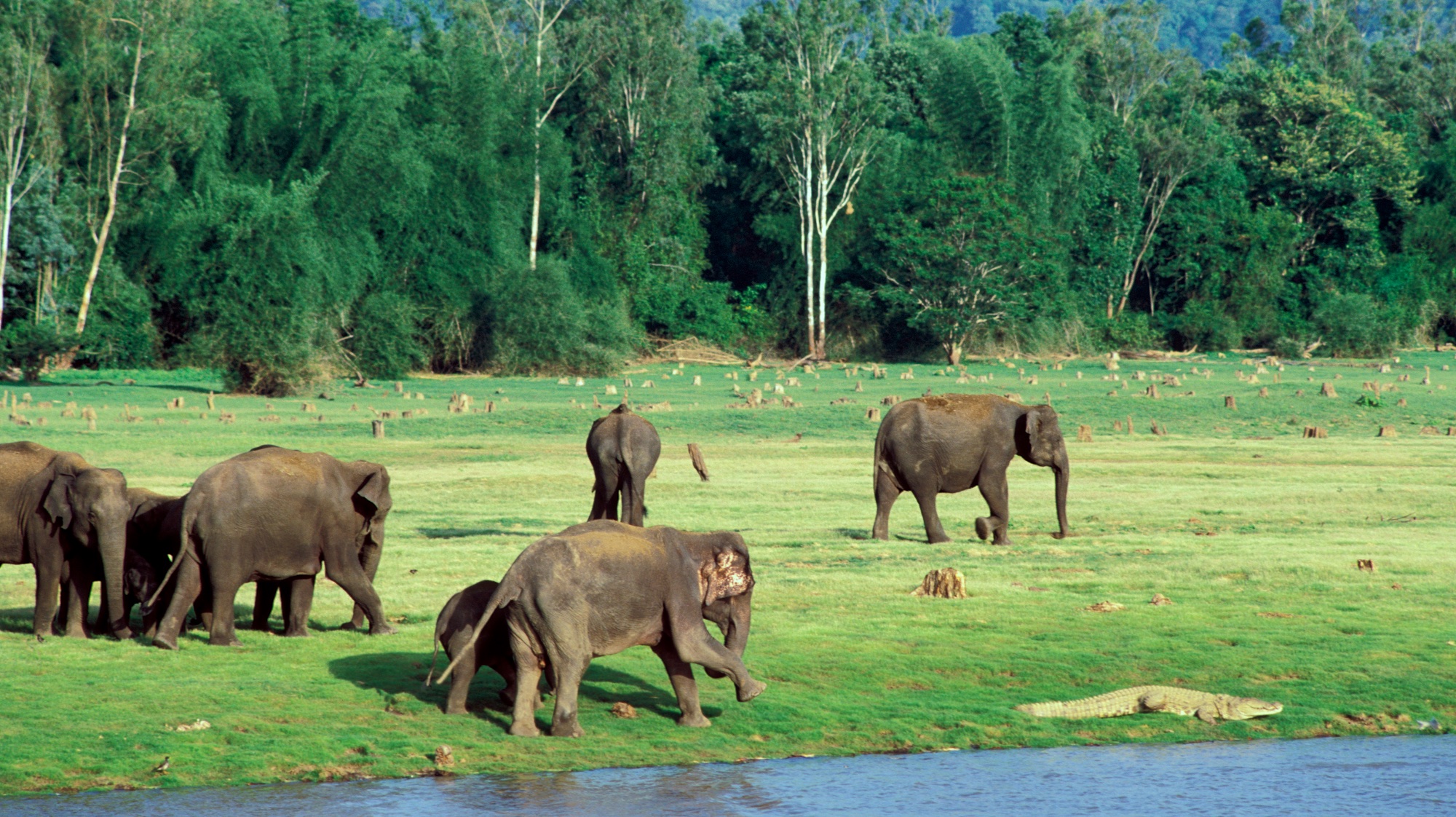
History That Flows with the River At the Kabini Dam, our guide explained how this region has been a wildlife sanctuary for centuries. Built in 1974, the dam created a reservoir that attracts wildlife from the surrounding forests. What fascinated me was learning about the ancient hunting practices of the local Soliga tribe, who have lived in harmony with the forest for generations. The region's importance as a wildlife corridor between Nagarhole and Bandipur National Parks makes it a crucial habitat for tigers, elephants, and other species.
Cultural Significance Kabini's culture is deeply rooted in the traditions of the local Soliga tribe and the broader Kodava community. During our stay, we attended a traditional Soliga ceremony where community members honored the forest with offerings and songs. The resort staff welcomed us with stories of their daily lives and traditional practices. What struck me was how Kabini has preserved its natural heritage while slowly embracing eco-tourism - you'll see wildlife conservation efforts integrated with tourism activities.
Why June is Special for Honeymooners
- Warm weather perfect for outdoor activities without extreme heat
- Frequent showers create a romantic, intimate atmosphere
- Fewer crowds mean more private wildlife experiences
- Lush green landscapes create stunning backdrops for photos
- Evening boat safaris feel magical as the rain clears
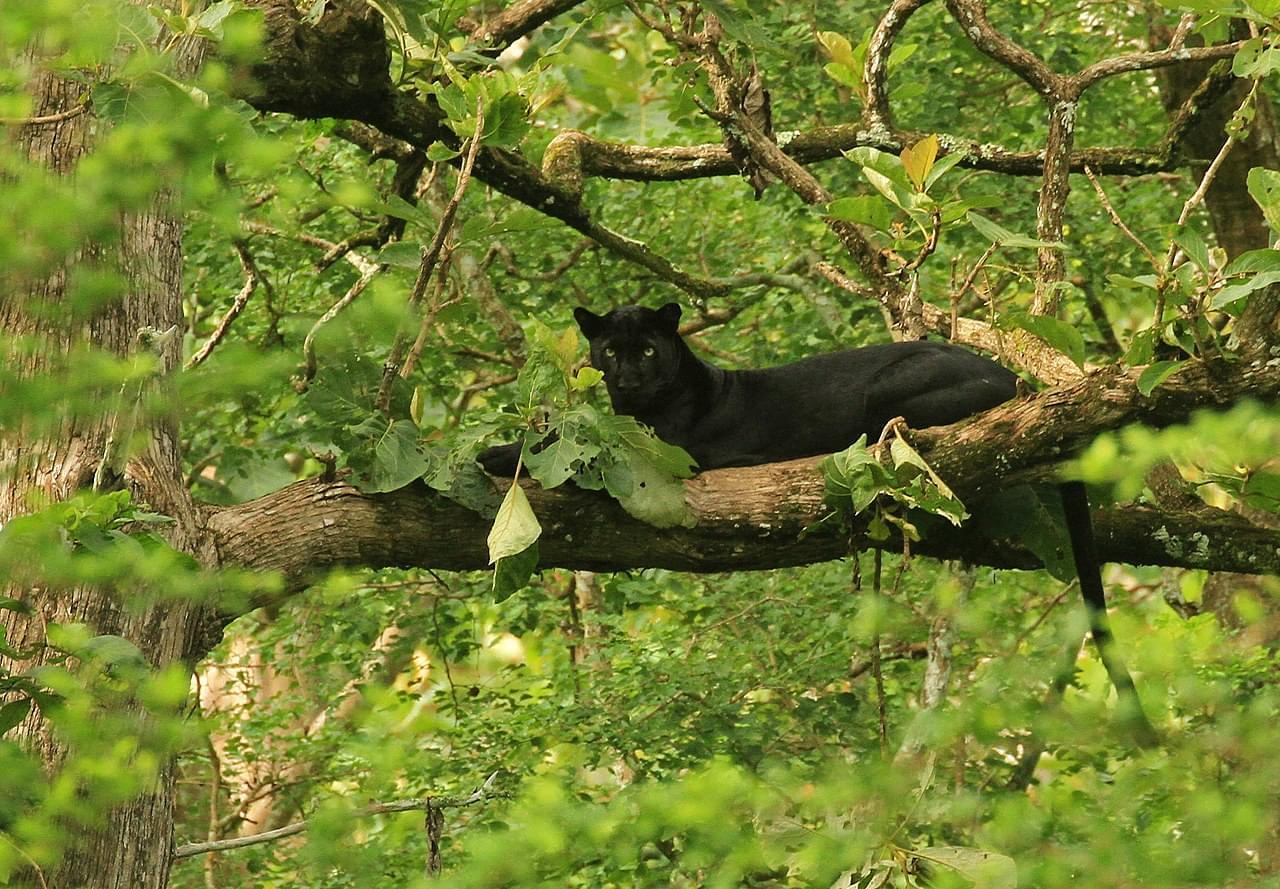
How to Reach Kabini
- By Air: Nearest airport is Mysore (90km), followed by a 2.5-hour drive
- By Train: Nearest railway station is Nanjangud (70km)
- By Road: Regular buses and taxis from Mysore and Bangalore
- Local Transport: Resort shuttles for safaris; walking around the resort is pleasant
My Favorite June Experience in Kabini Our evening boat safari on the Kabini River. As the first evening shower began to fall, we sat under the canopy of our boat, watching the rain create ripples on the calm water. The boat guide, Mr. Kumar, pointed out different bird species as we glided silently through the water. As the rain cleared, the setting sun painted the sky in hues of orange and pink, reflecting off the water. and I sat in silence, listening to the sounds of the river - the gentle lapping of water against the boat, the distant calls of birds, and the rustling of leaves in the breeze. Later, as we returned to the resort, we spotted a herd of elephants drinking from the river - a perfect end to a romantic day.
Gokarna, Karnataka: The Untouched Coastal Paradise
Gokarna surprised us with its raw beauty. Unlike the more famous beaches of Goa, Gokarna felt like a well-kept secret - a coastal town where traditional life continues much as it has for centuries. June's first monsoon showers had just passed, leaving the air clean and the landscape vibrant green. The coastline stretched endlessly, with palm-fringed beaches and traditional fishing villages dotting the shore.
Why Gokarna in June?
- Temperatures range from 26-32°C with frequent refreshing showers
- First monsoon showers enhance the natural beauty without heavy rains
- Fewer tourists than more famous beach destinations
- Lush green landscapes with blooming flowers
- Calm seas perfect for swimming and water activities
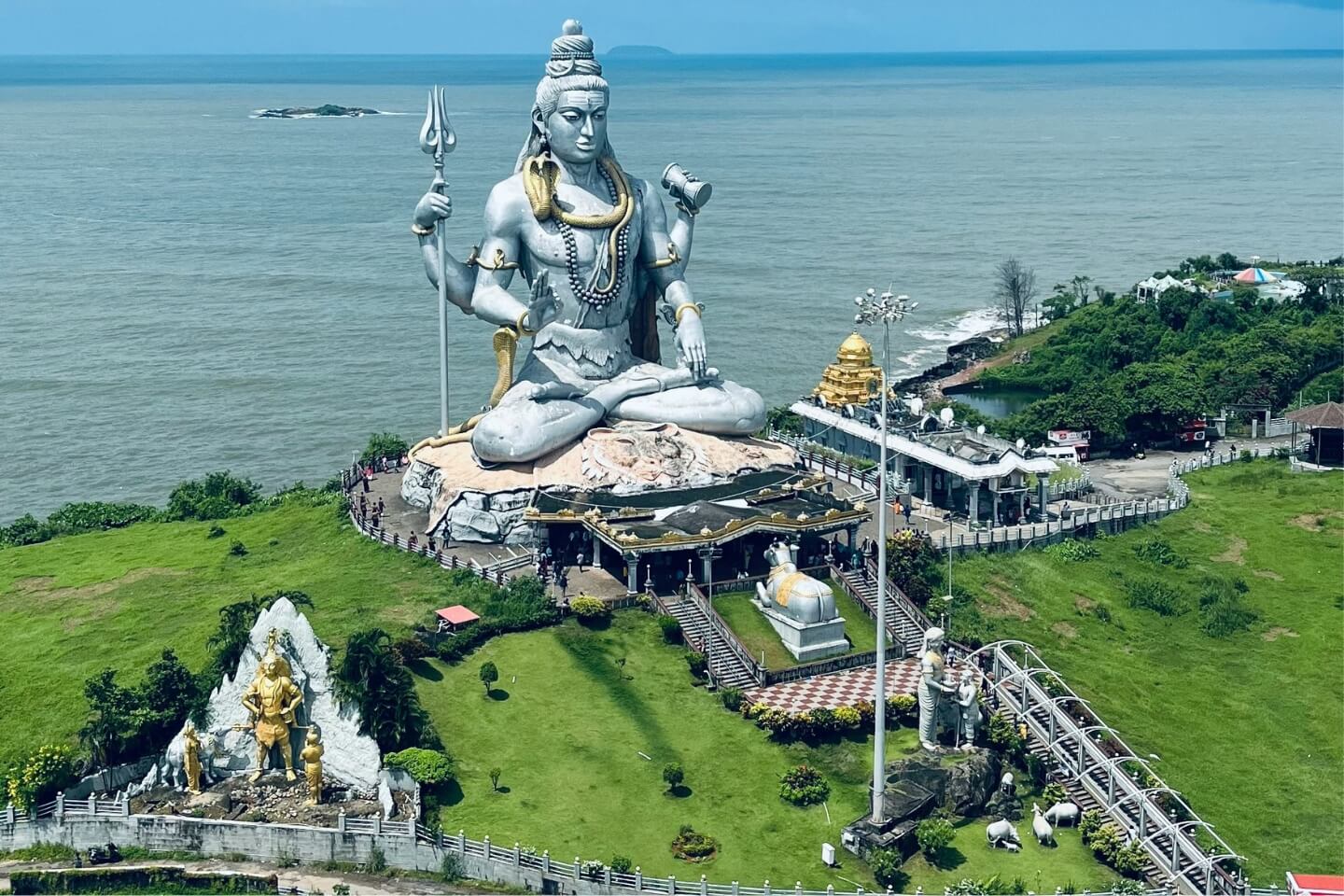
History That Flows with the Rivers At the Mahabaleshwar Temple, our guide explained how Gokarna has been a pilgrimage site for centuries. The temple, dedicated to Lord Shiva, houses one of the twelve Jyotirlingas. What fascinated me was learning about the ancient trade routes that passed through Gokarna, connecting Karnataka with the Middle East and beyond. The town's name literally means "Cow's Ear," referring to the shape of the beach. Standing on the beach at sunset, I could imagine the ships that once sailed these waters carrying spices to distant lands.
Cultural Significance Gokarna's culture is deeply rooted in Hindu traditions, with strong influences from the region's maritime history. During our stay, we witnessed the colorful rituals at the Mahabaleshwar Temple, where pilgrims performed aarti ceremonies. The local fishing community welcomed us into their homes, sharing stories of their daily lives and traditional practices. What struck me was how Gokarna has preserved its traditional way of life while slowly embracing tourism - you'll see fishermen using age-old techniques alongside modern boats, and women wearing traditional sarees while using smartphones.
Why June is Special for Honeymooners
- Warm weather perfect for beach activities without extreme heat
- Frequent showers create a romantic, intimate atmosphere
- Fewer crowds mean more private beach experiences
- Lush green landscapes with blooming flowers create stunning backdrops
- Evening walks along the beach feel magical as the rain clears
How to Reach Gokarna
- By Air: Nearest airport is Goa (160km), followed by a 4-hour drive
- By Train: Gokarna Road Railway Station is well-connected to major cities
- By Road: Regular buses and taxis from Goa and Mangalore
- Local Transport: Auto-rickshaws for local travel; walking along the coast is pleasant
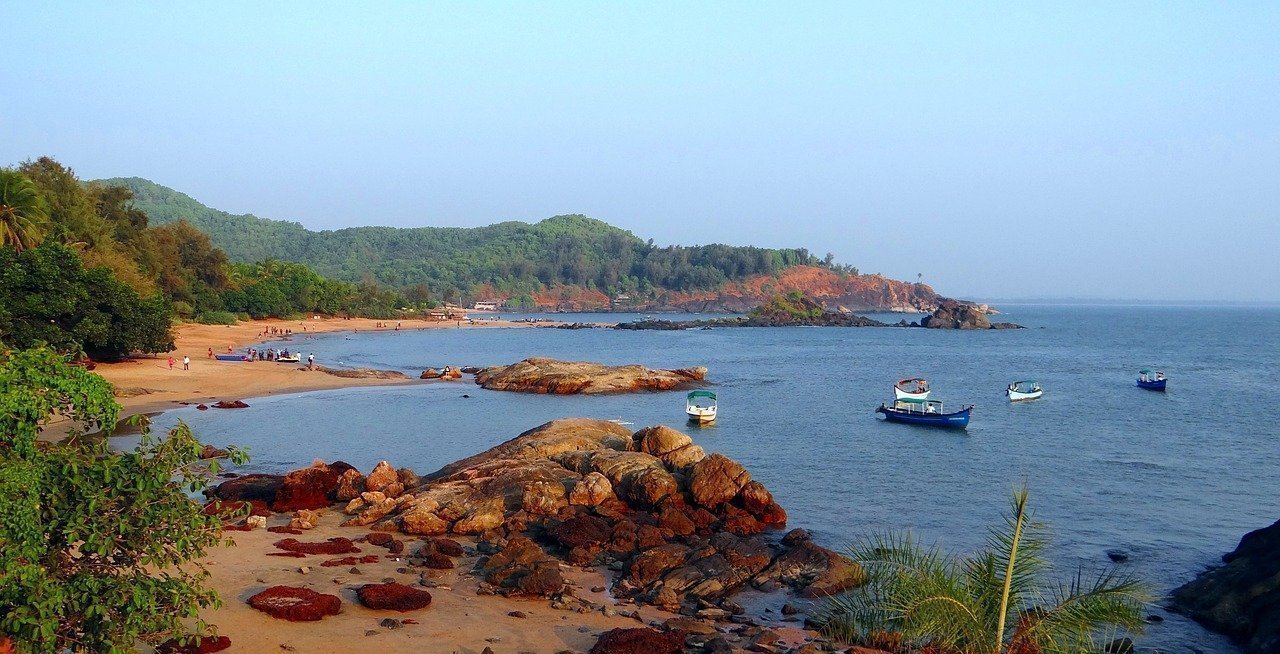
My Favorite June Experience in Gokarna Walking along Om Beach at sunset. We had the entire stretch of sand to ourselves as the first evening shower began to fall. The rain was warm and gentle, creating ripples on the surface of the Arabian Sea. and I ran to a nearby café where the owner welcomed us with hot tea and stories of his life along the coast. As the rain cleared, the setting sun painted the sky in hues of orange and pink, reflecting off the wet sand. Later, we visited a local home for a traditional Mangalorean meal, sharing stories with our hosts while watching the evening stars appear - a perfect end to a romantic day.
Hampi, Karnataka: Where History Meets Romance
Hampi surprised us with its dramatic landscape. Unlike any other place in India, Hampi is an open-air museum of ancient ruins set against a backdrop of massive boulders and the Tungabhadra River. June's first monsoon showers had just passed, leaving the air clean and the landscape vibrant green. The ruins of the Vijayanagara Empire stretched endlessly, telling stories of a glorious past through their weathered stones.
Why Hampi in June?
- Temperatures range from 26-35°C with frequent refreshing showers
- First monsoon showers enhance the natural beauty without heavy rains
- Fewer tourists than peak season
- Lush green landscapes with blooming flowers create stunning backdrops
- Pleasant evenings perfect for exploring
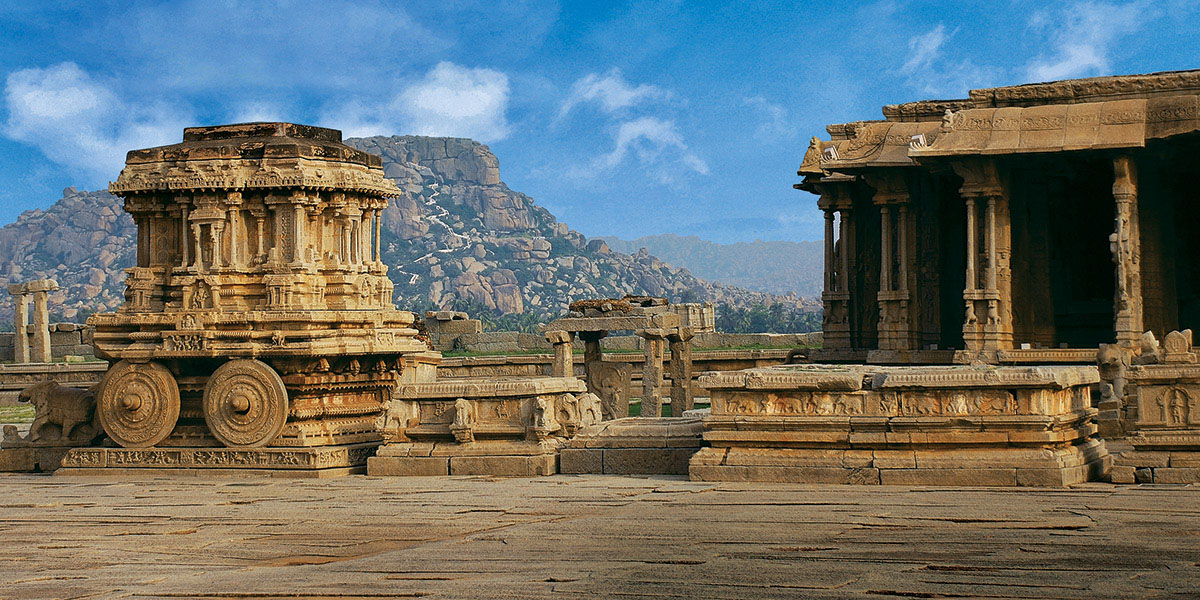
History Written in Stone At the Virupaksha Temple, our guide explained how Hampi was the capital of the Vijayanagara Empire from the 14th to 16th centuries. What fascinated me was learning about the empire's sophisticated water management system, with canals and aqueducts that still function today. The region's importance as a trading center is evident in the ruins of markets, temples, and royal complexes. Standing on Hemakuta Hill at sunset, I could see why this location was chosen as the capital - panoramic views of the river and surrounding boulders.
Cultural Significance Hampi's culture is deeply rooted in India's ancient traditions, with strong influences from the region's historical significance. During our stay, we witnessed traditional rituals at the Virupaksha Temple, where pilgrims performed aarti ceremonies. The local communities welcomed us with stories of their daily lives and traditional practices. What struck me was how Hampi has preserved its historical significance while slowly embracing tourism - you'll see pilgrims visiting ancient temples alongside tourists exploring the ruins.
Why June is Special for Honeymooners
- Warm weather perfect for exploring without extreme heat
- Frequent showers create a romantic, intimate atmosphere
- Fewer crowds mean more private experiences at the ruins
- Lush green landscapes create stunning backdrops for photos
- Evening explorations feel magical as the rain clears
How to Reach Hampi
- By Air: Nearest airport is Hubli (140km), followed by a 3-hour drive
- By Train: Hampi Railway Station is well-connected to major cities
- By Road: Regular buses and taxis from Hospet (13km)
- Local Transport: Bicycles or scooters for exploring; auto-rickshaws available
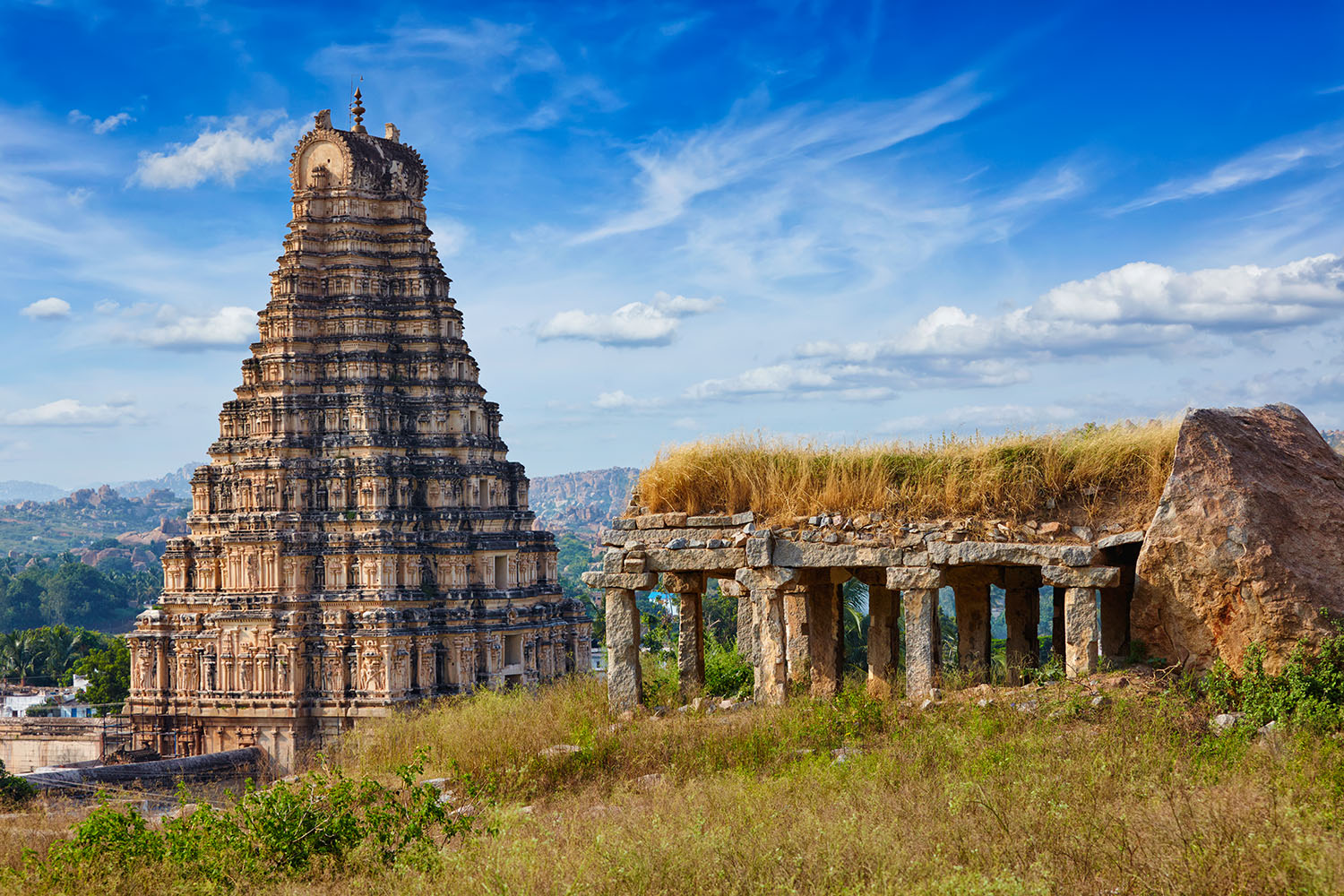
My Favorite June Experience in Hampi Watching the sunset from Matanga Hill. We began our climb as the first evening shower began to fall, the rain creating a mist that added to the mystical atmosphere. As we reached the summit, the clouds parted to reveal the entire Hampi landscape bathed in golden light. and I sat in silence, watching as the sun dipped behind the boulders, casting long shadows across the ancient ruins. Later, we visited the Lotus Mahal, where the evening light highlighted the intricate carvings. We ended our day with a traditional Karnataka meal at a local restaurant, sharing bisi bele bath (spicy rice dish) while watching the stars appear over the ruins - a perfect end to a romantic day.


